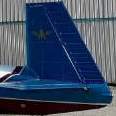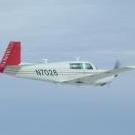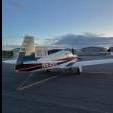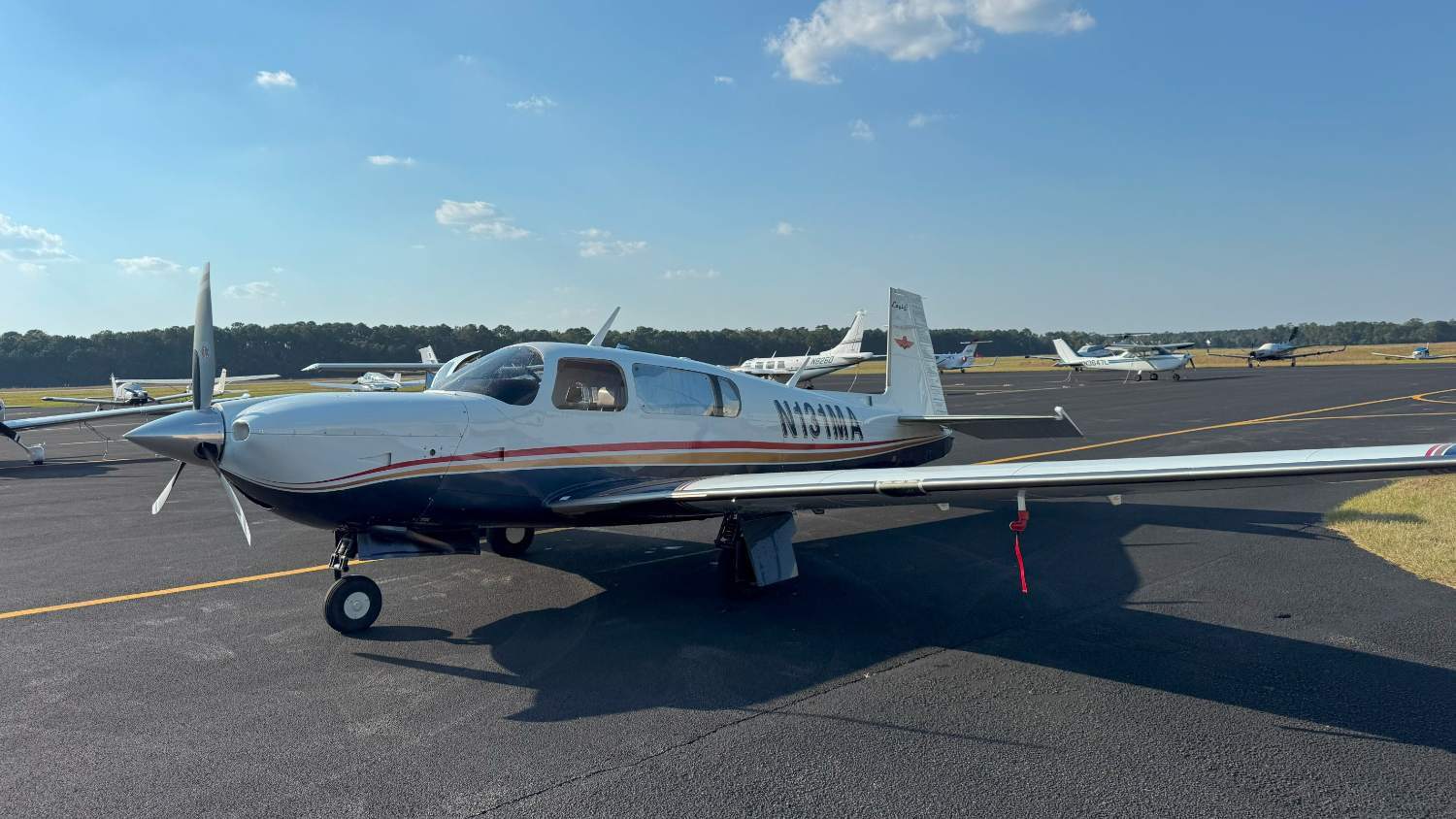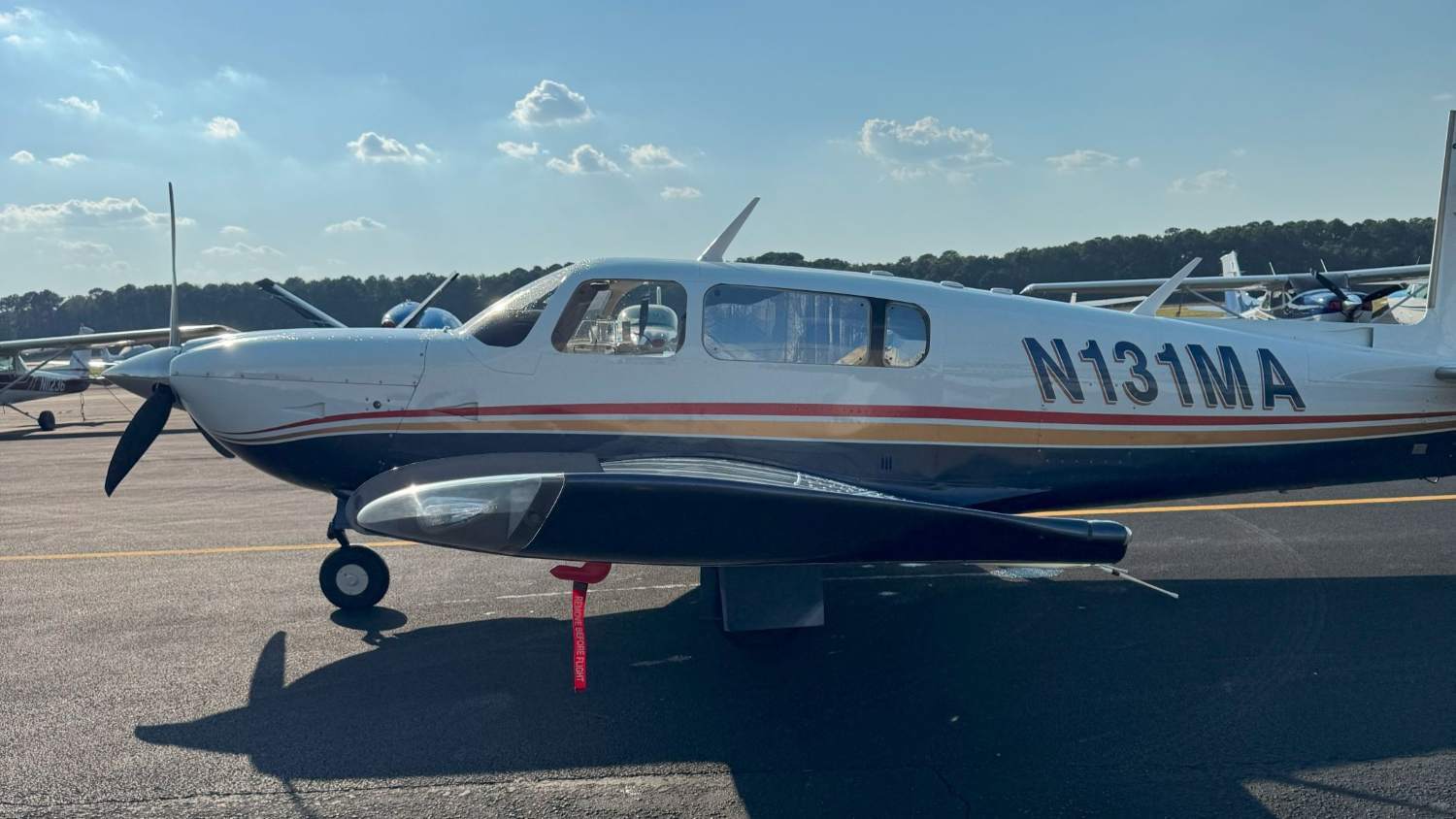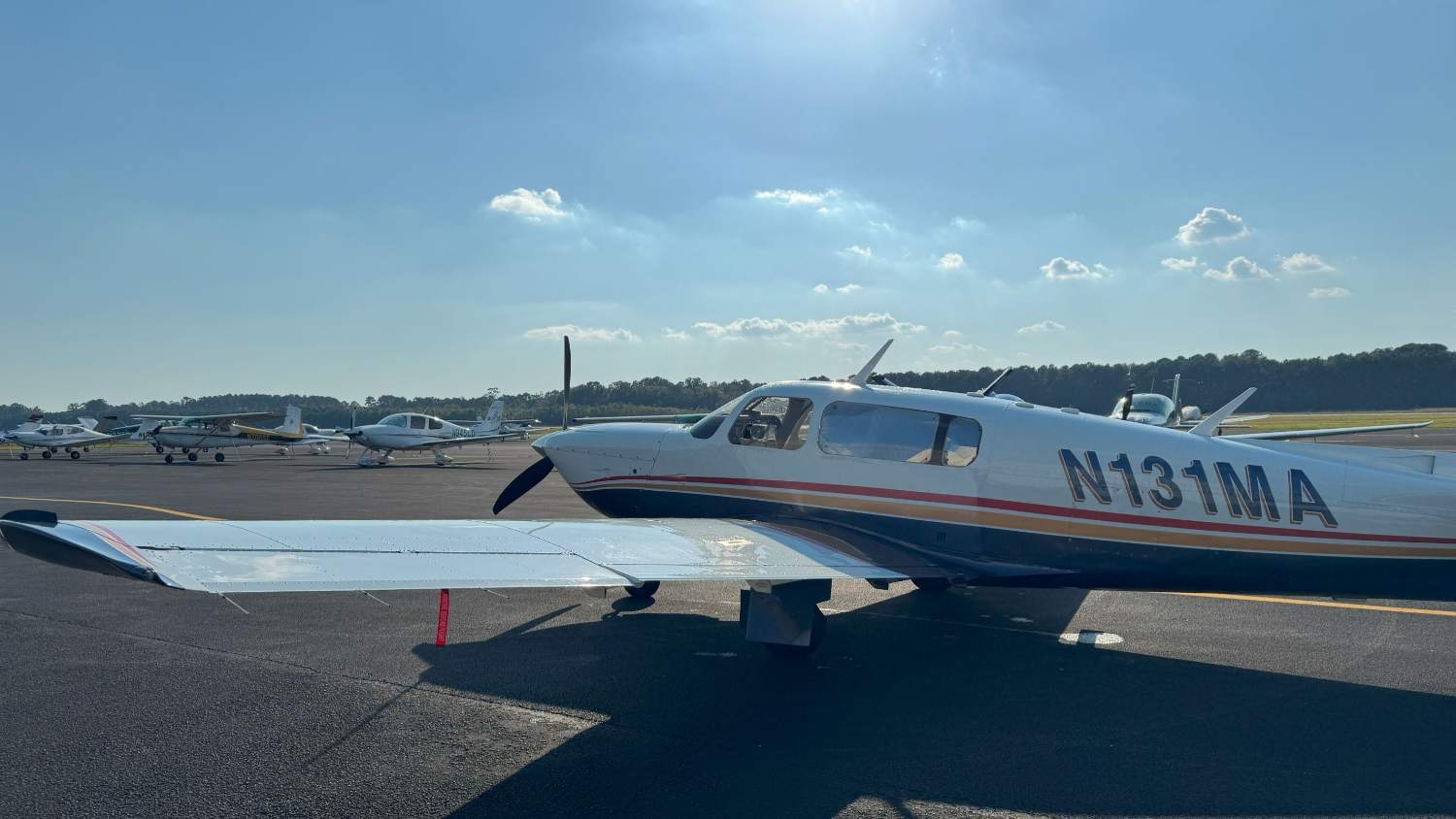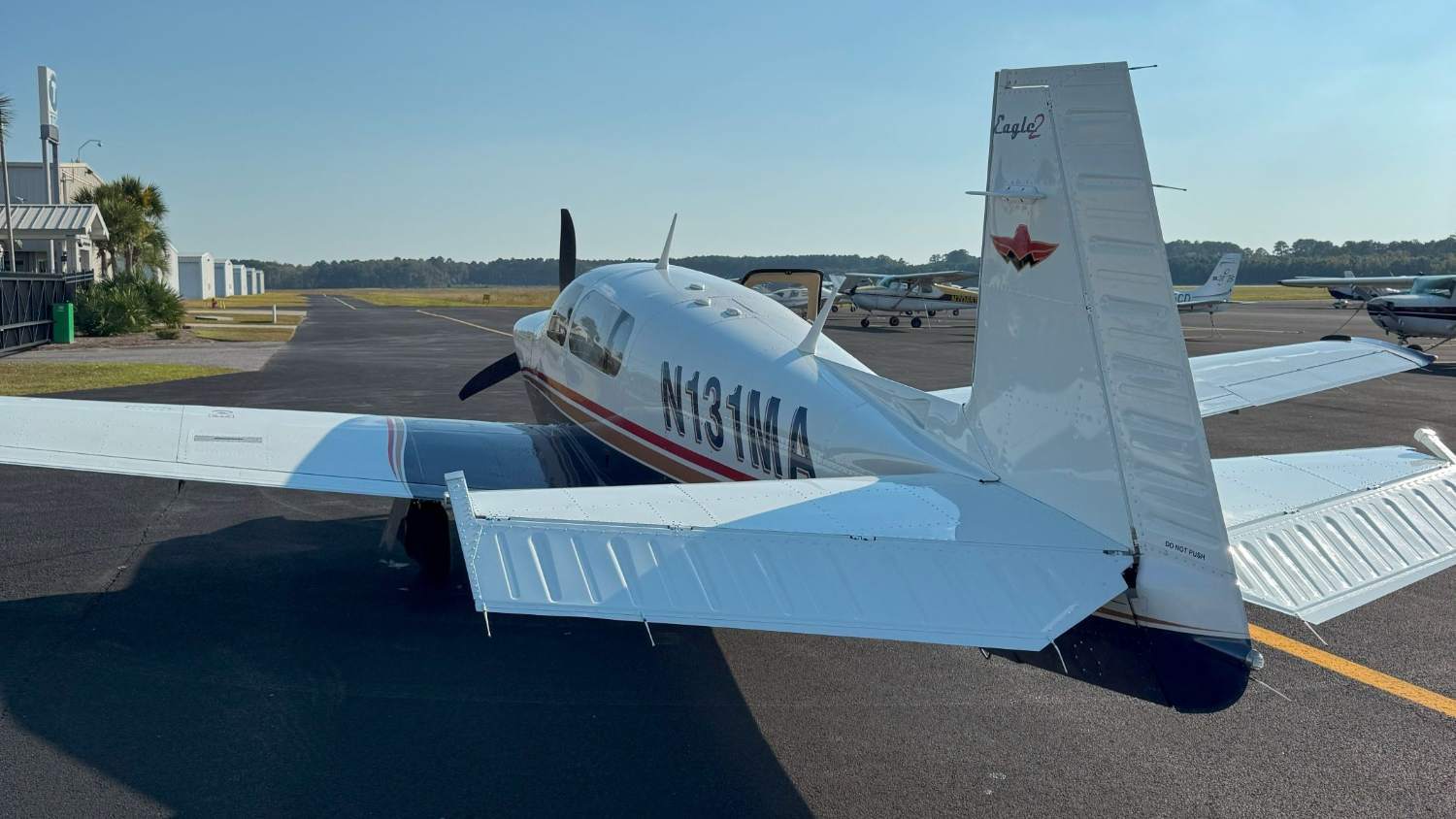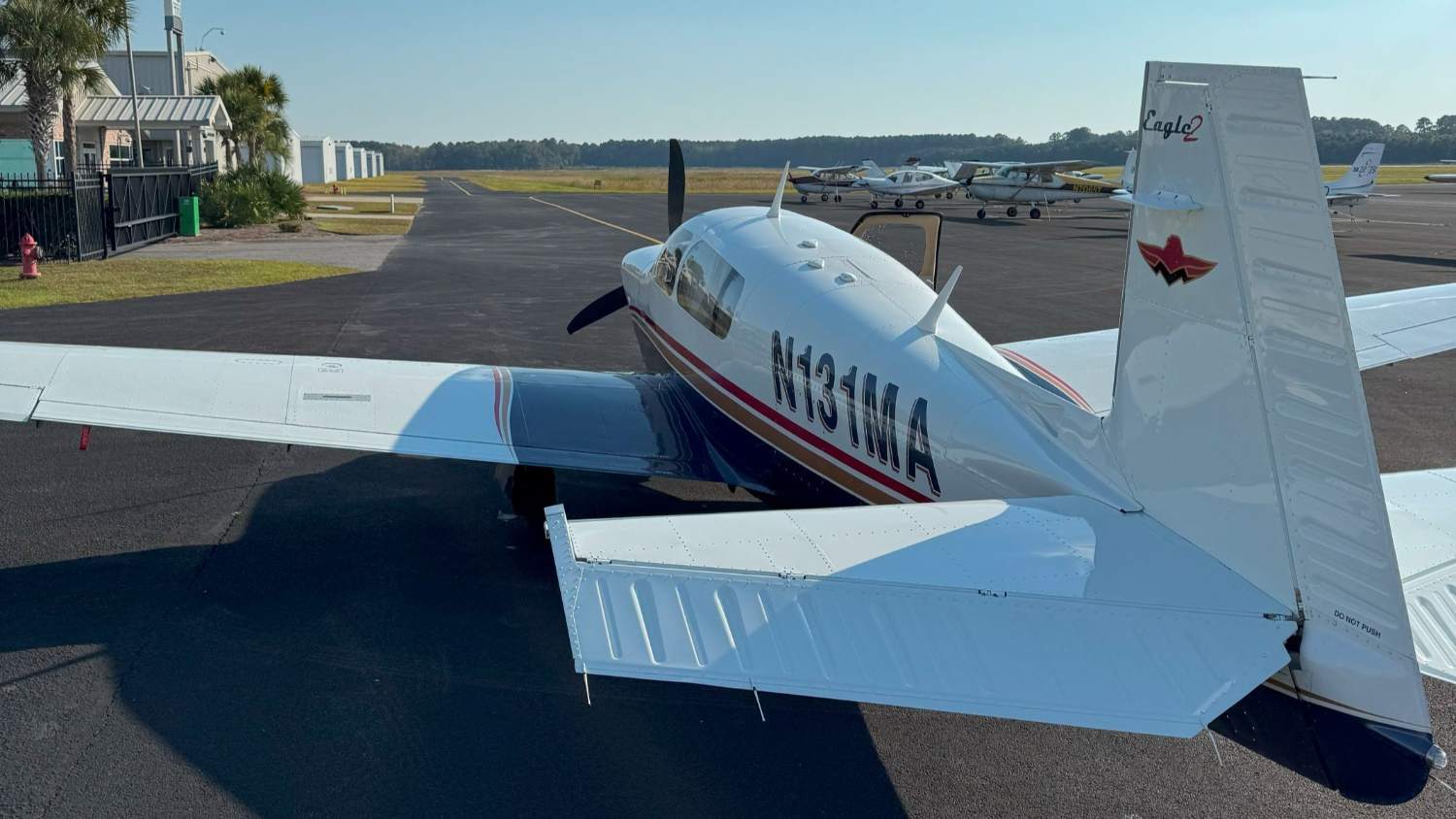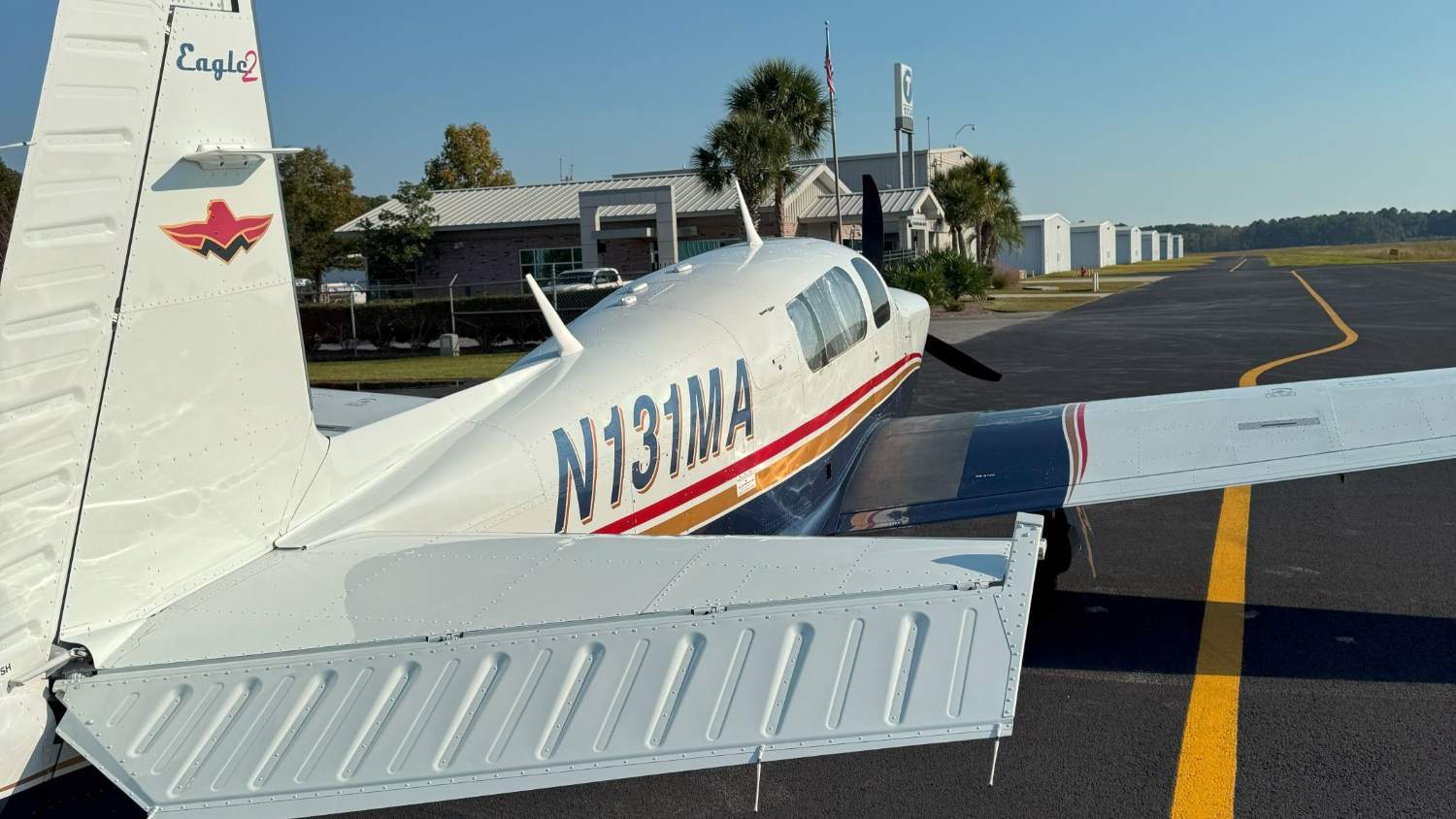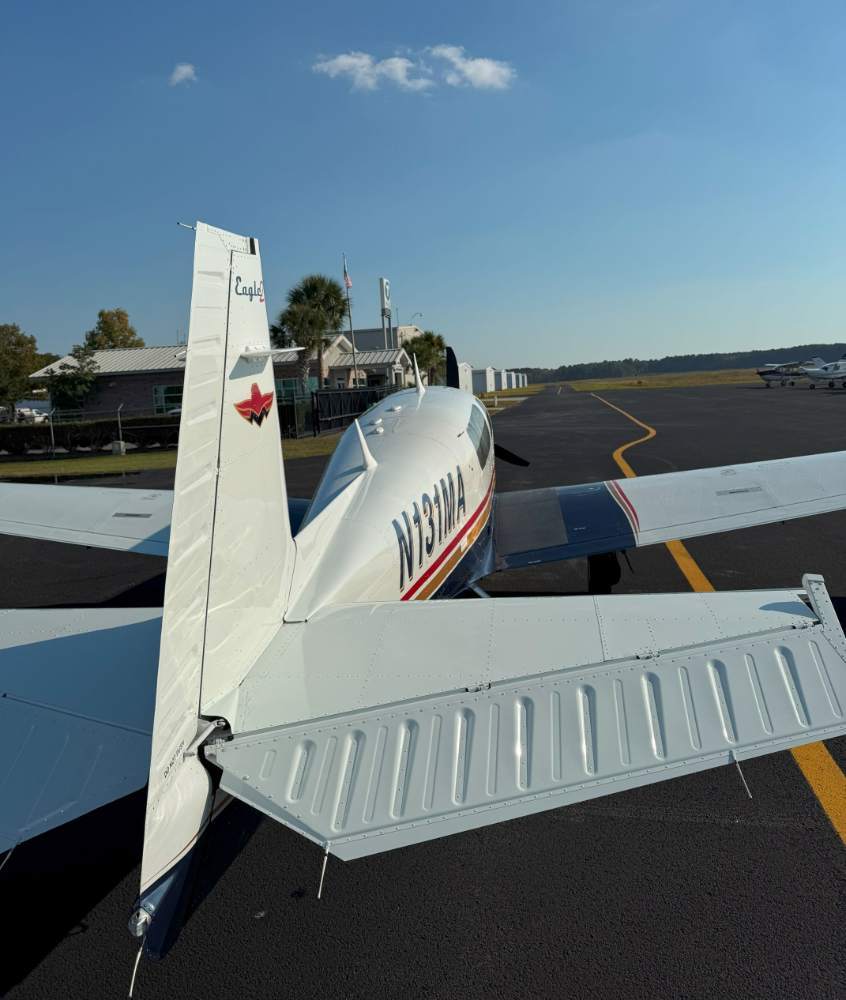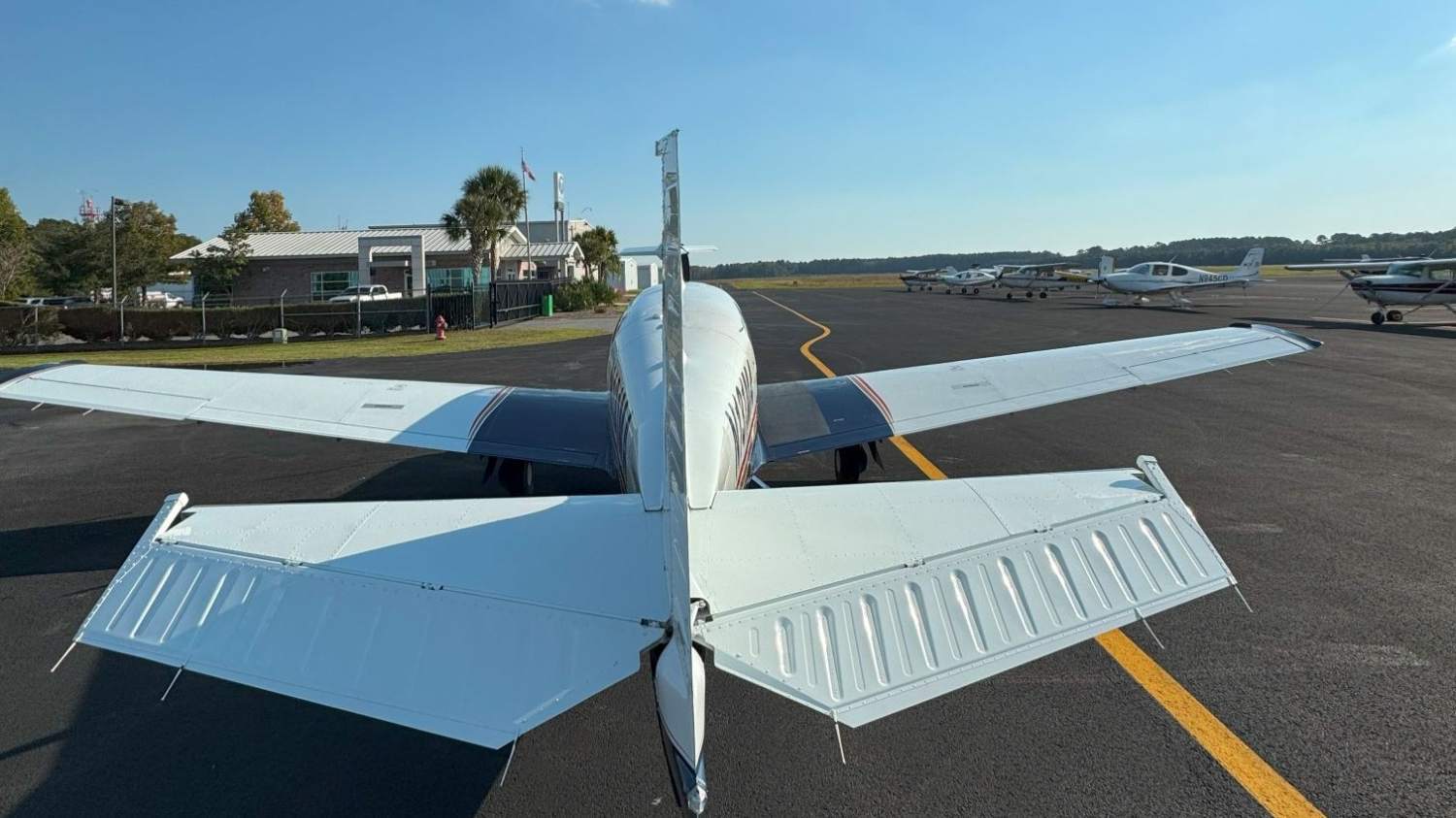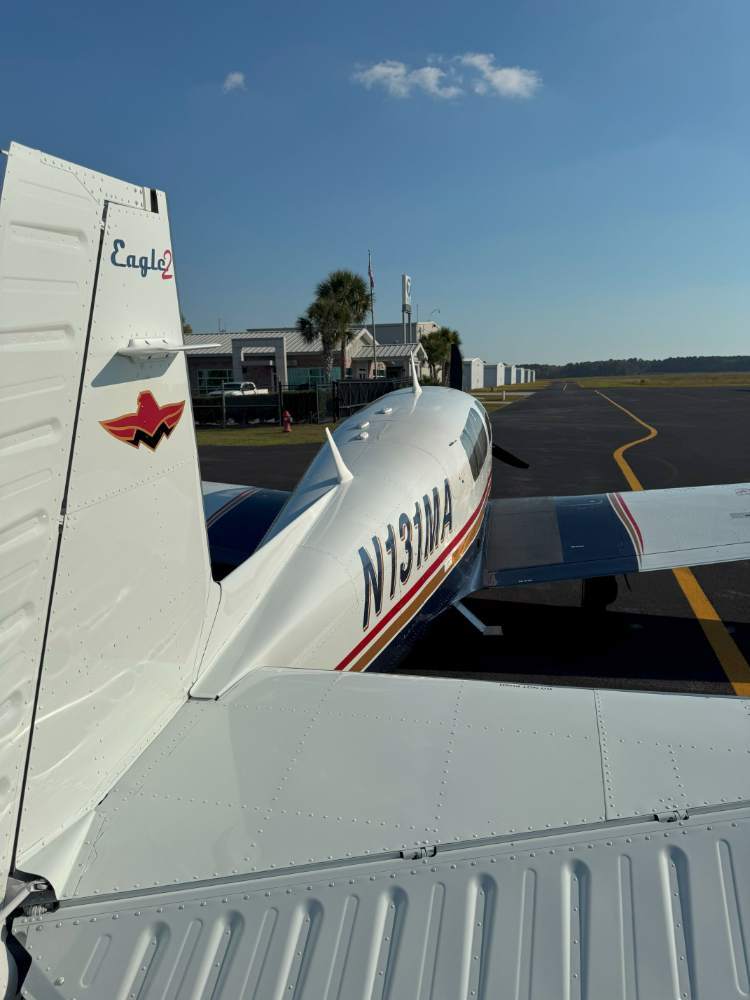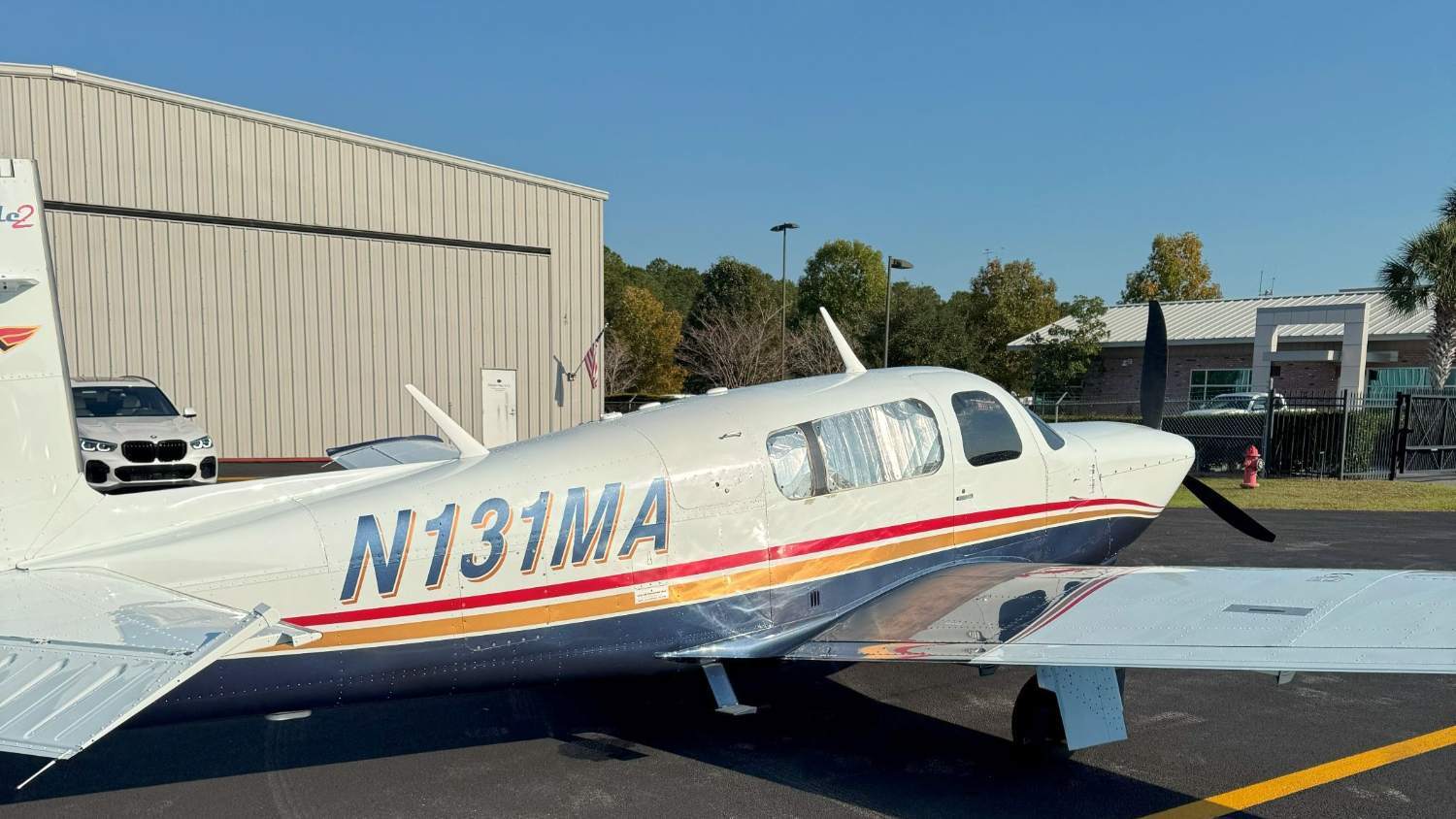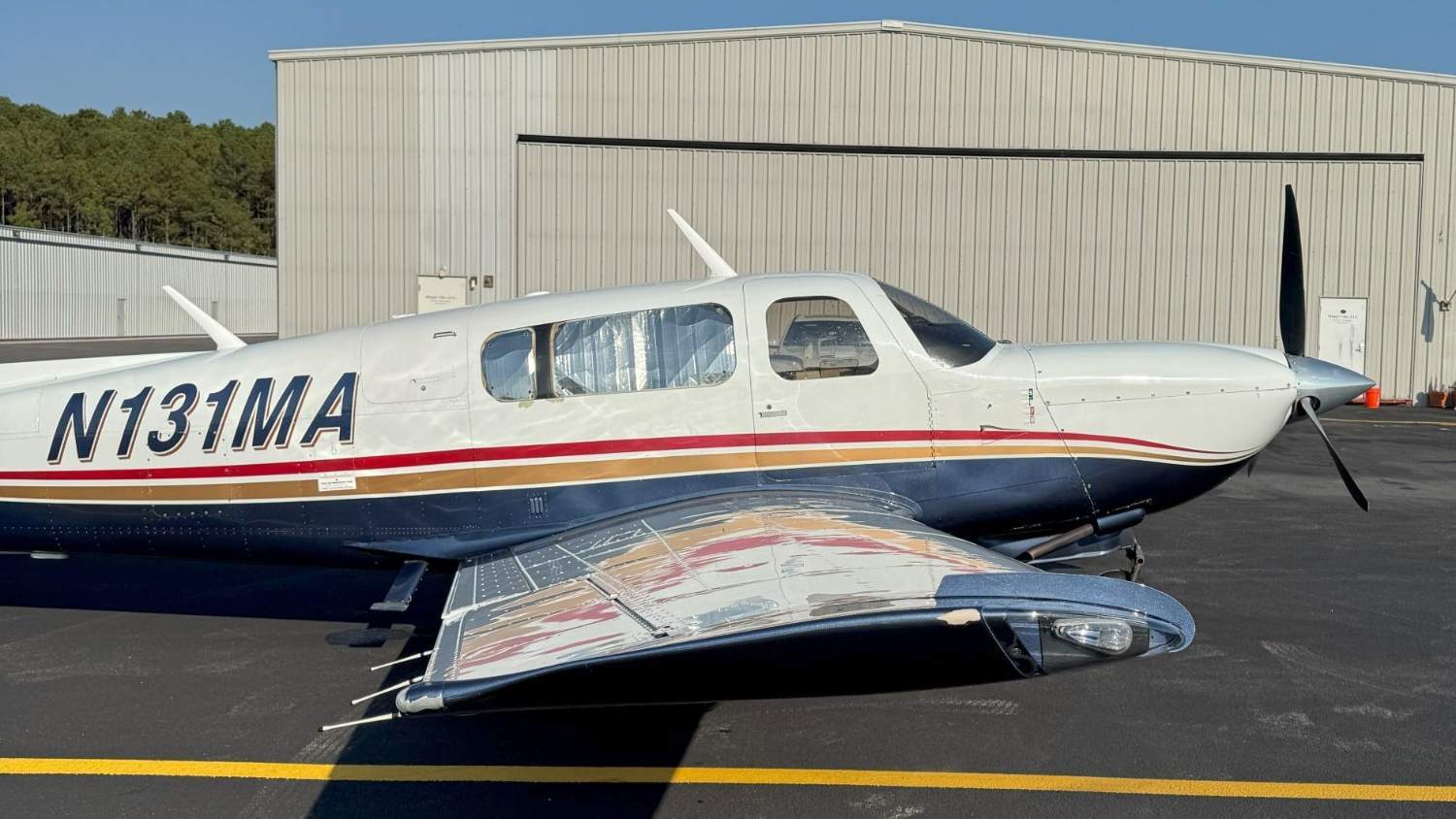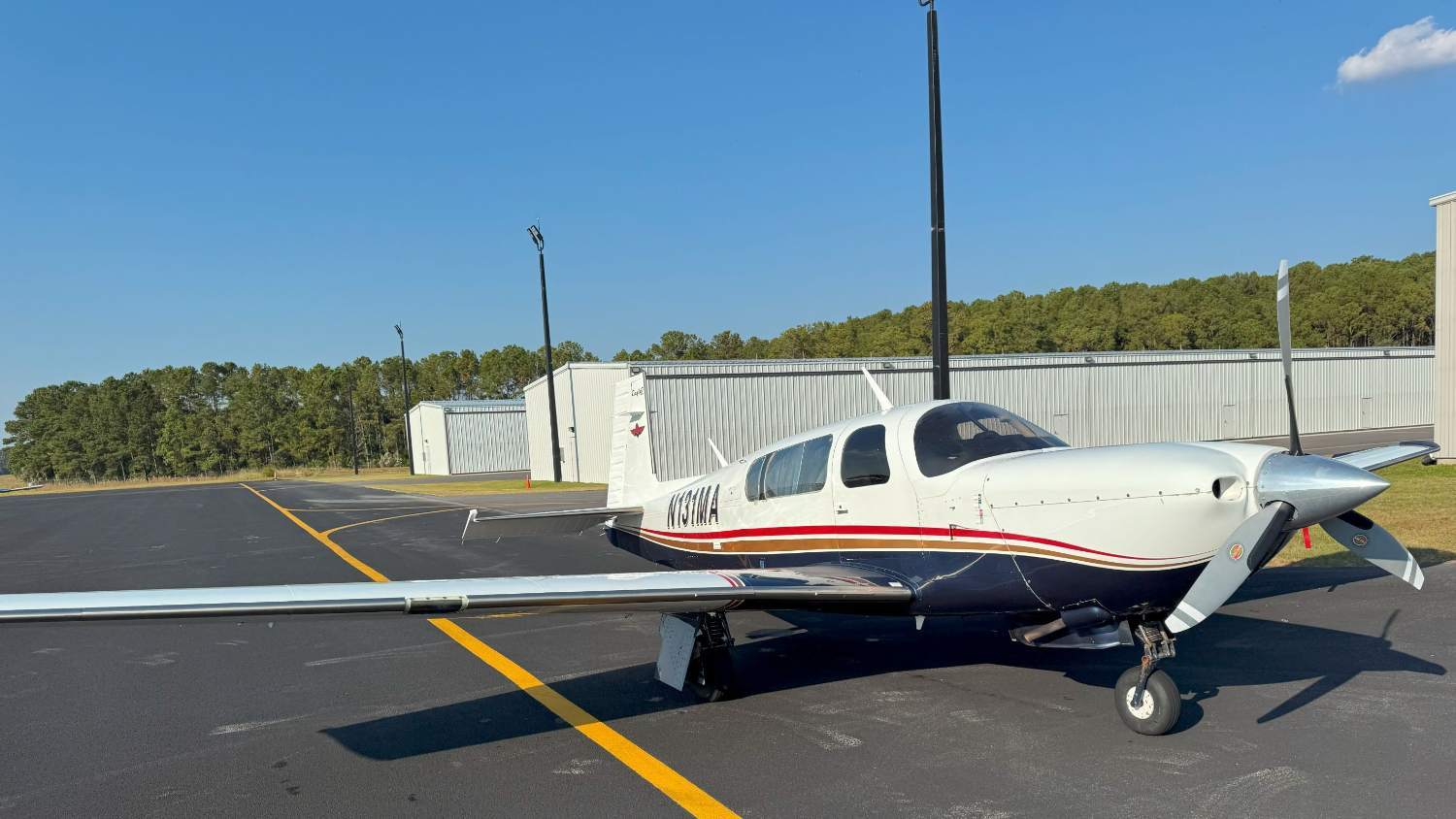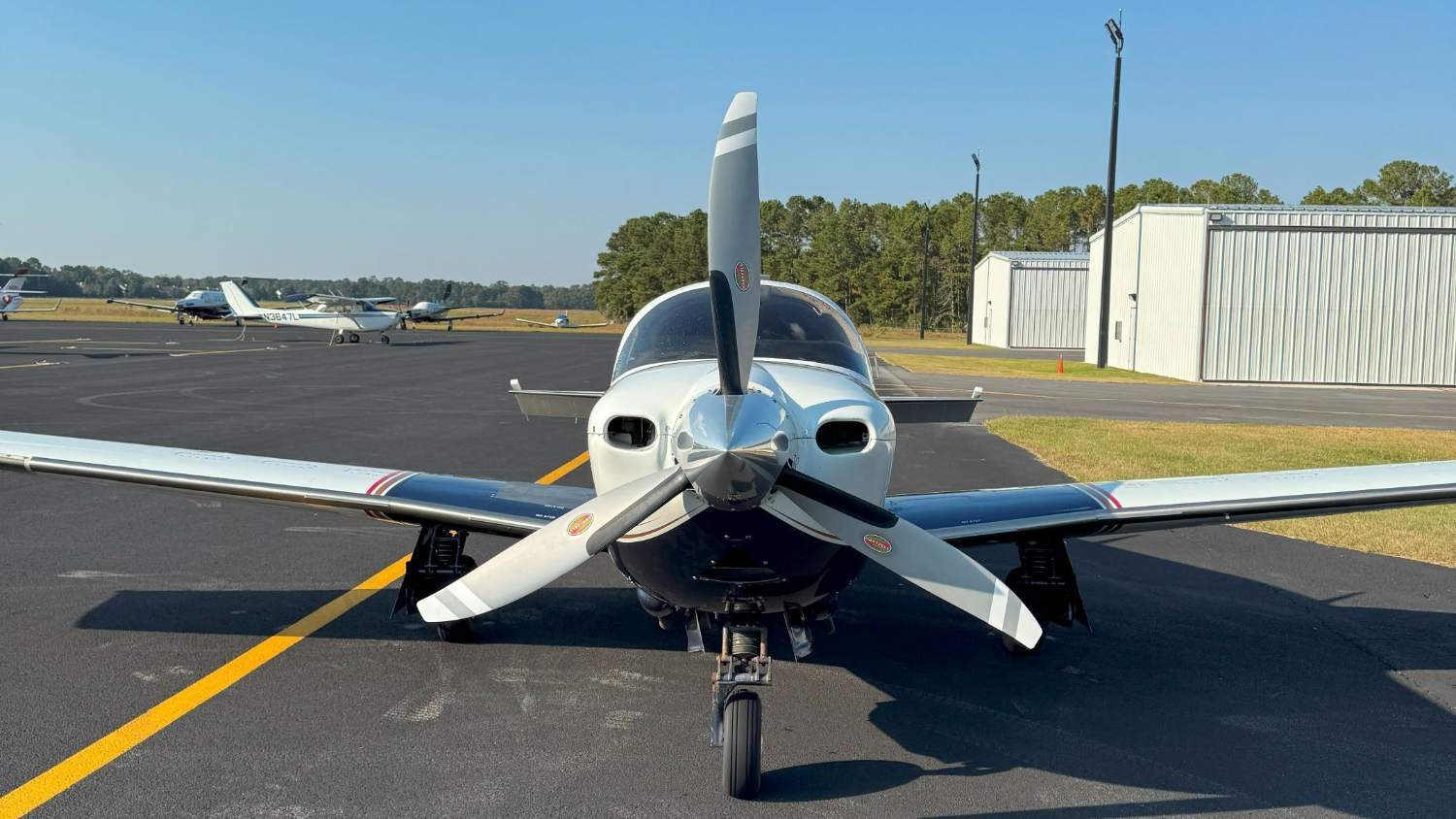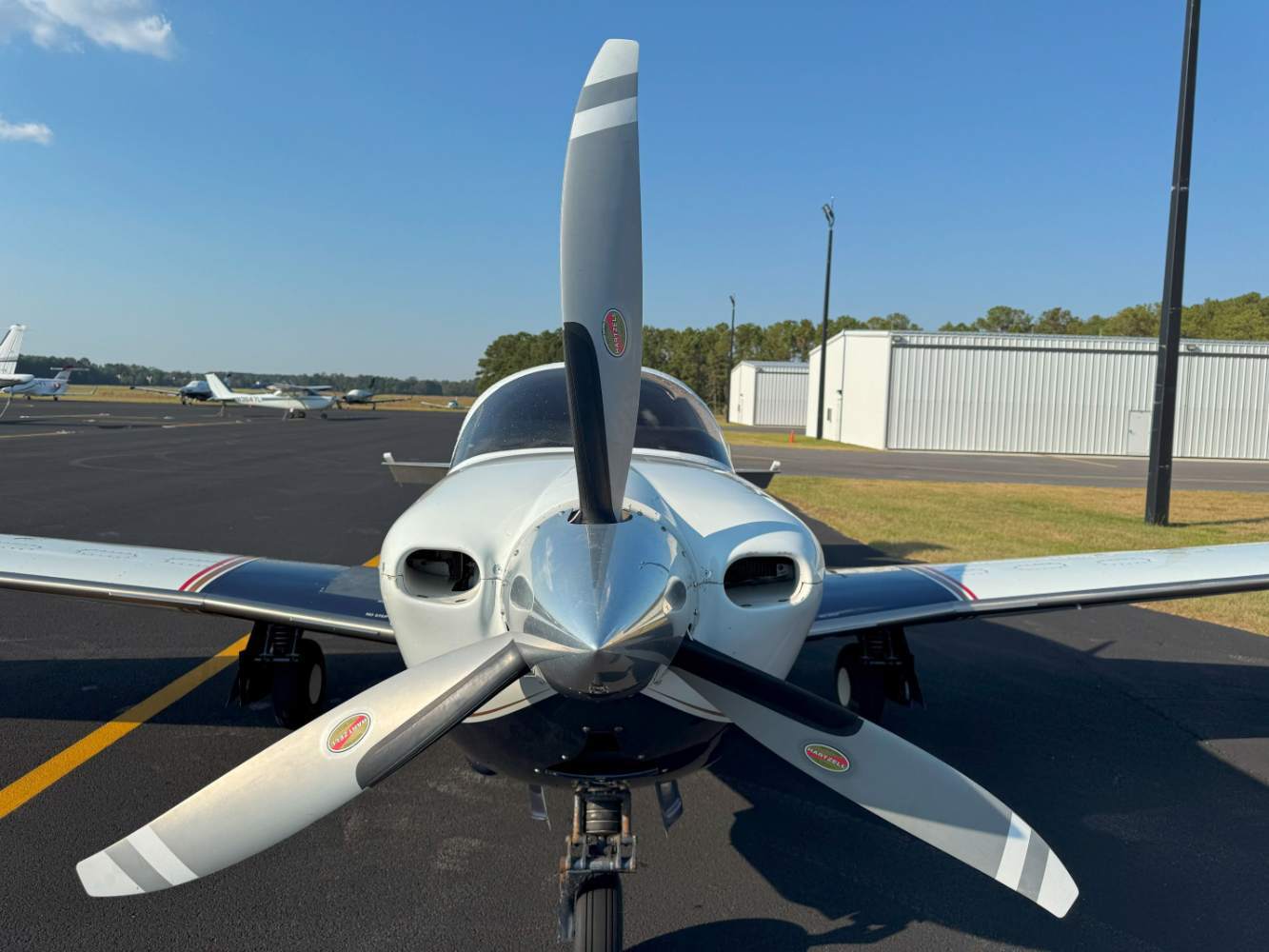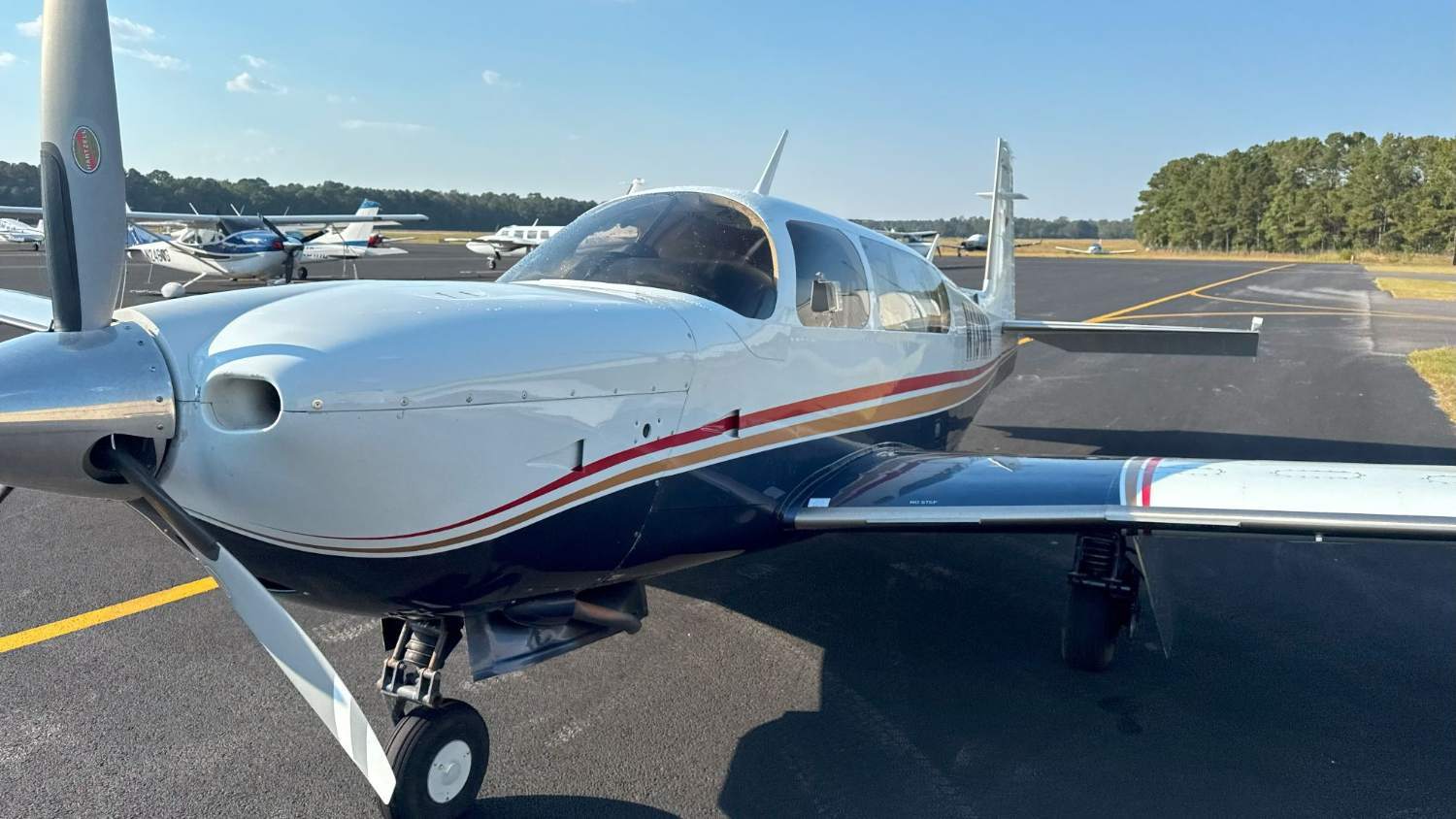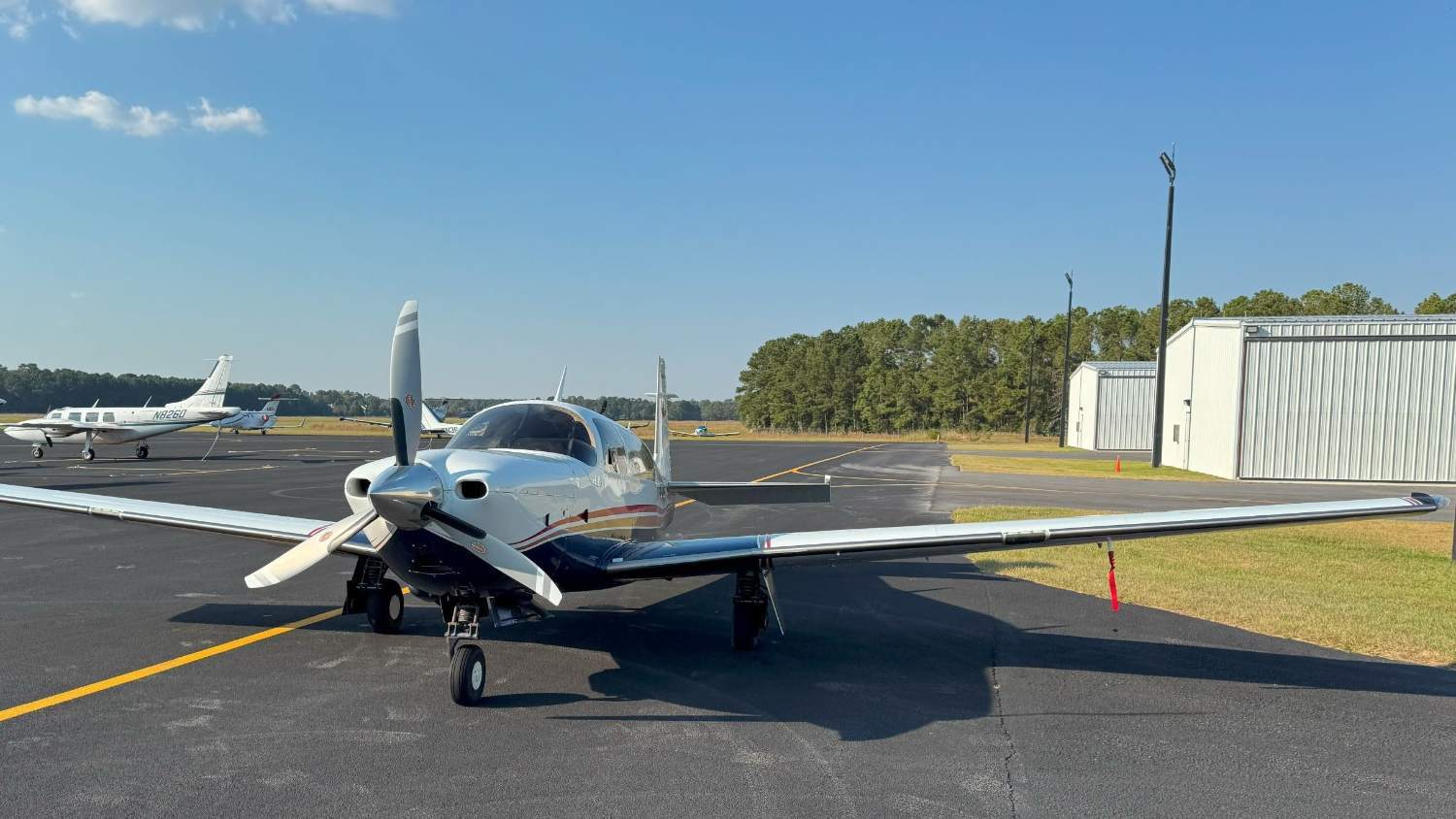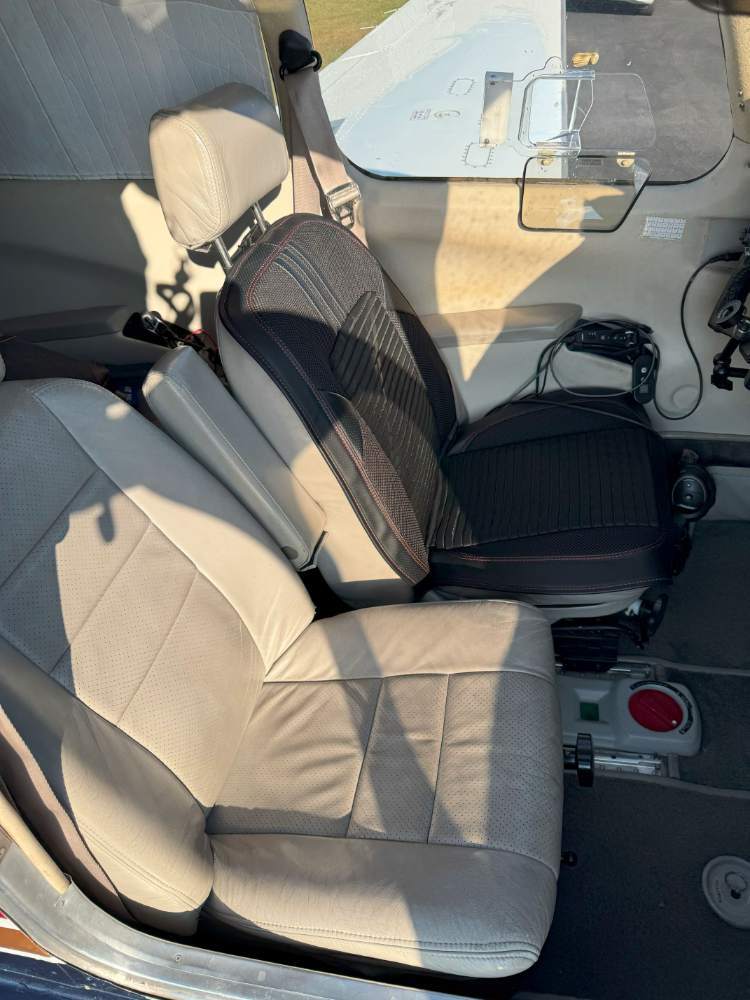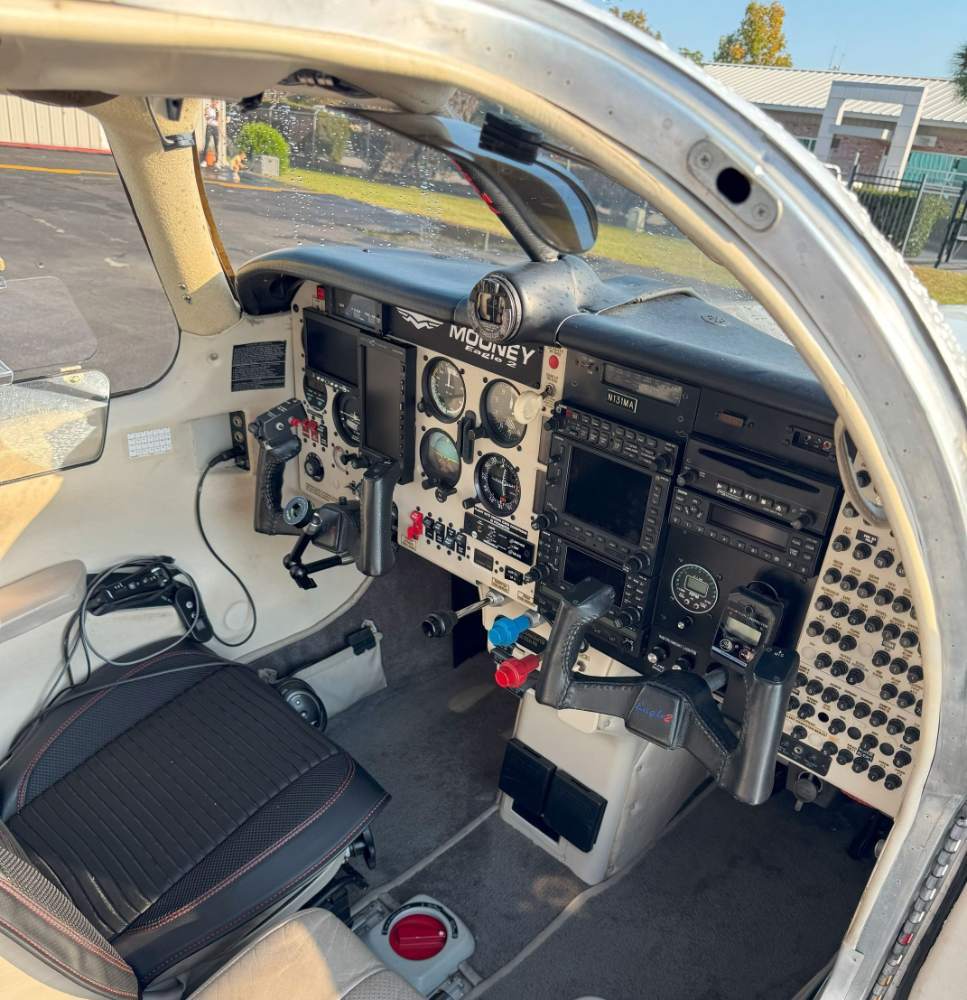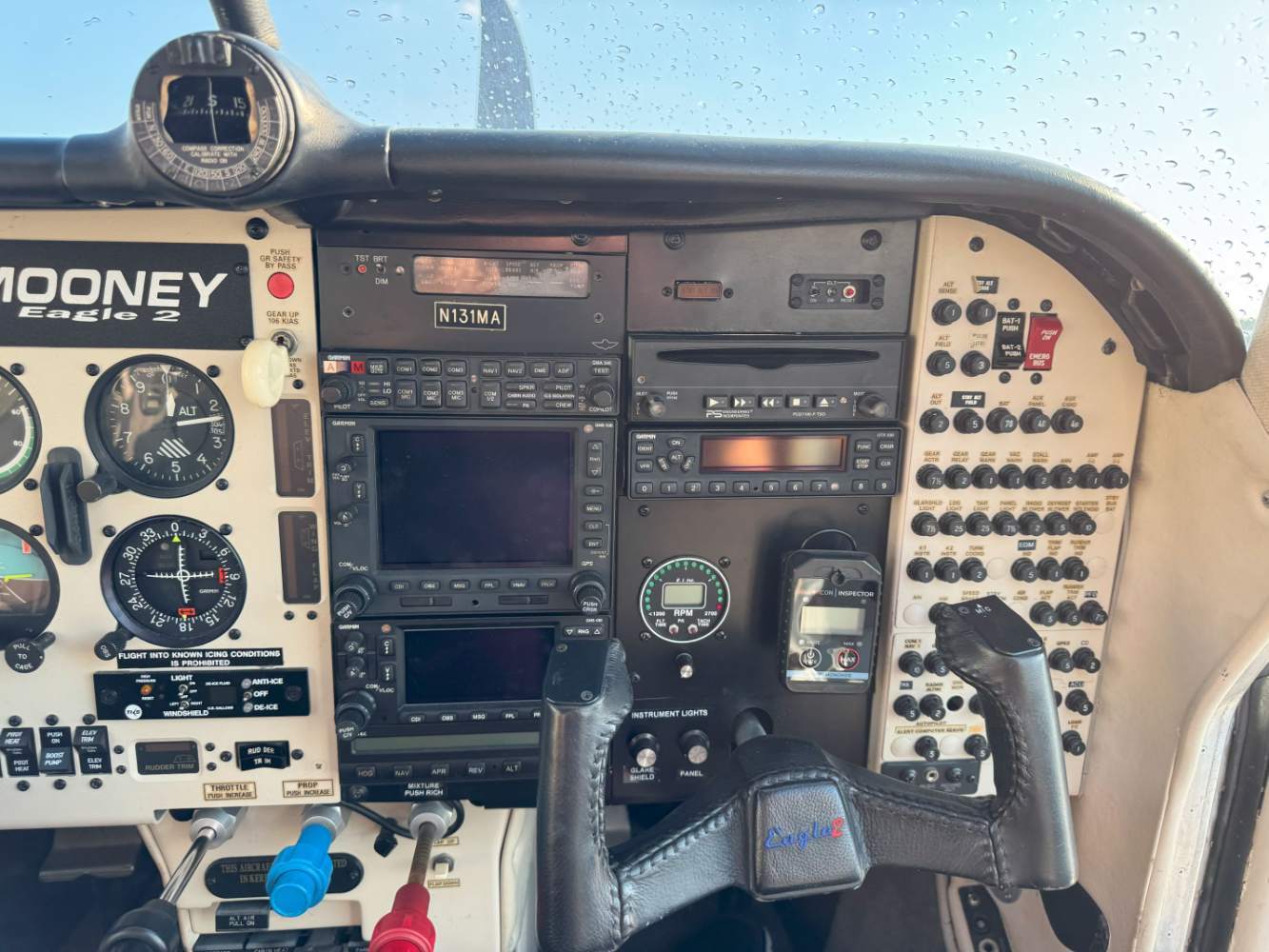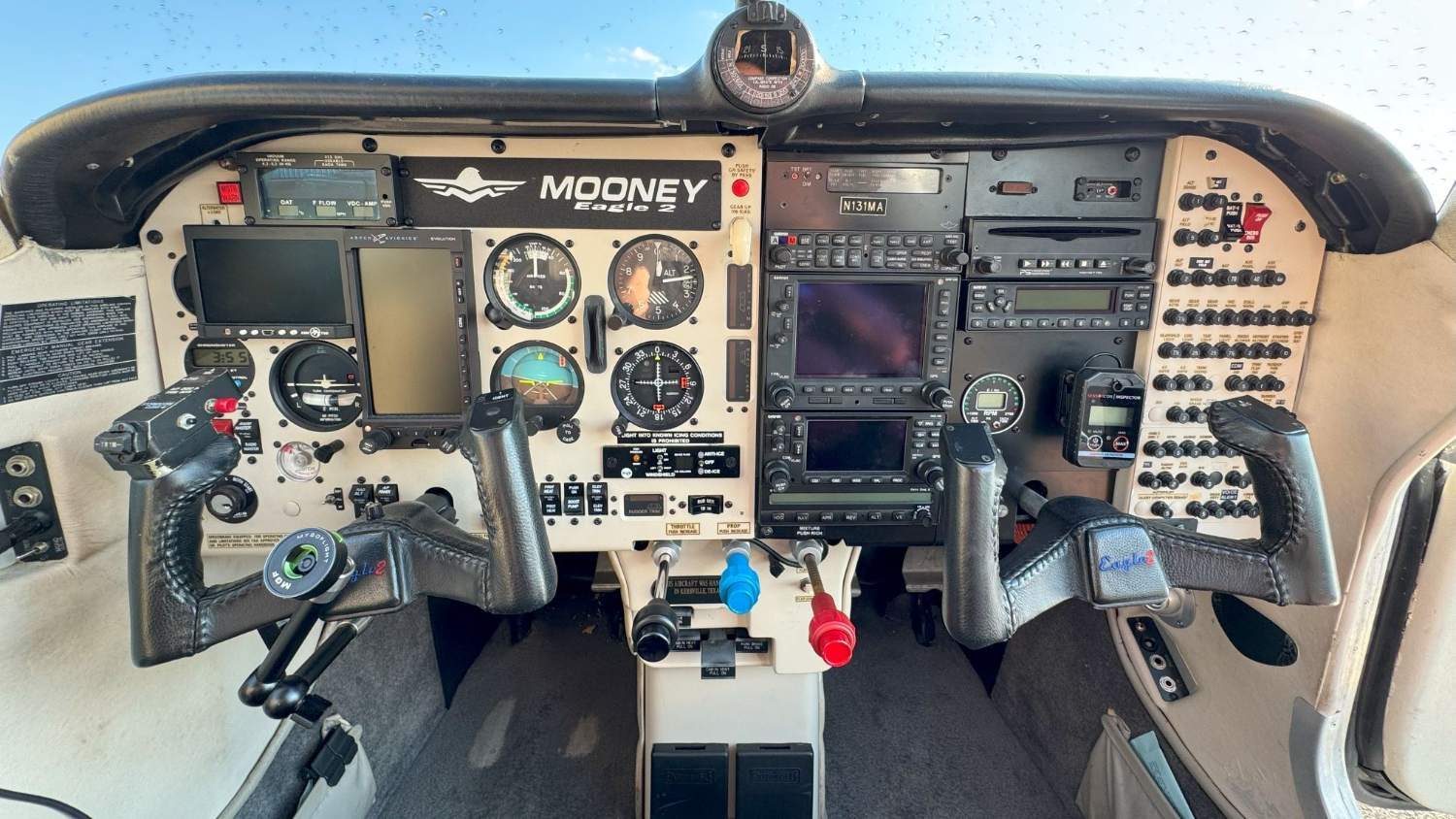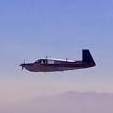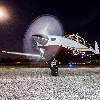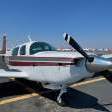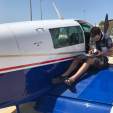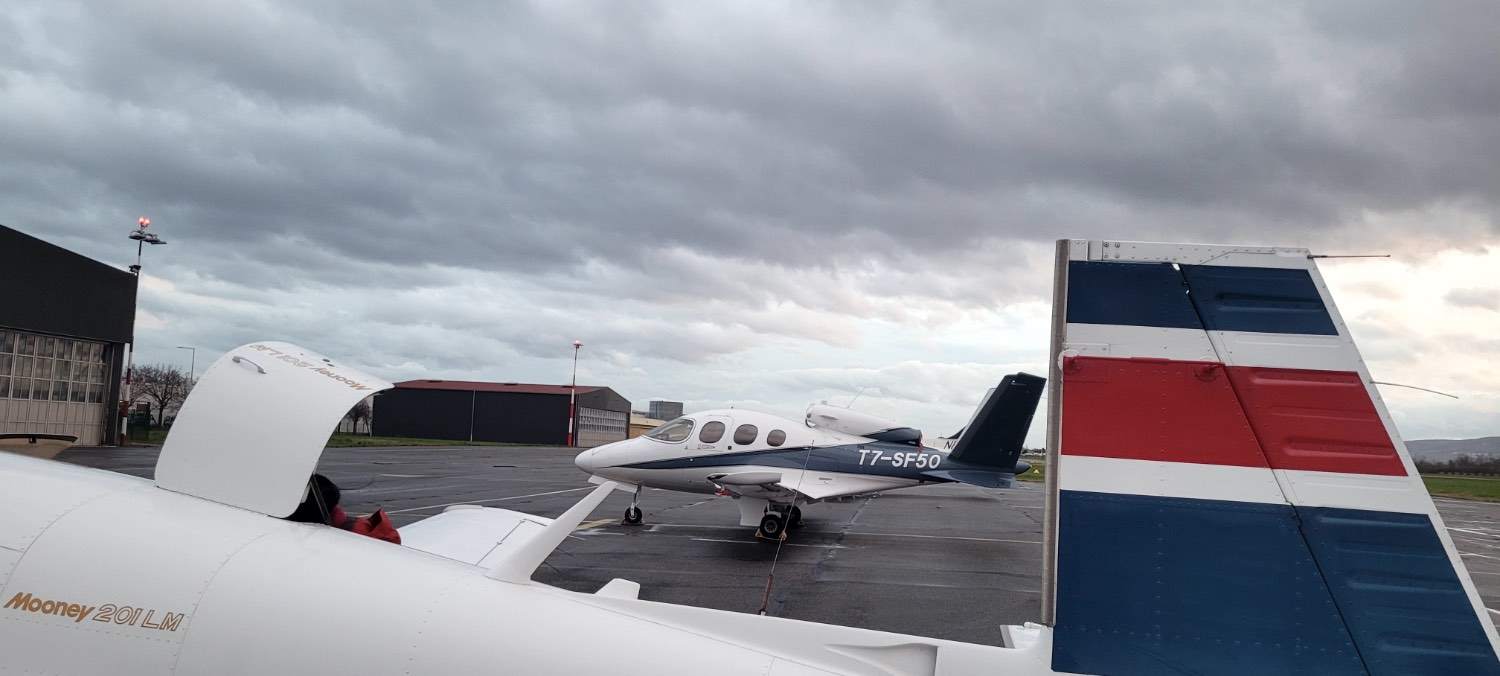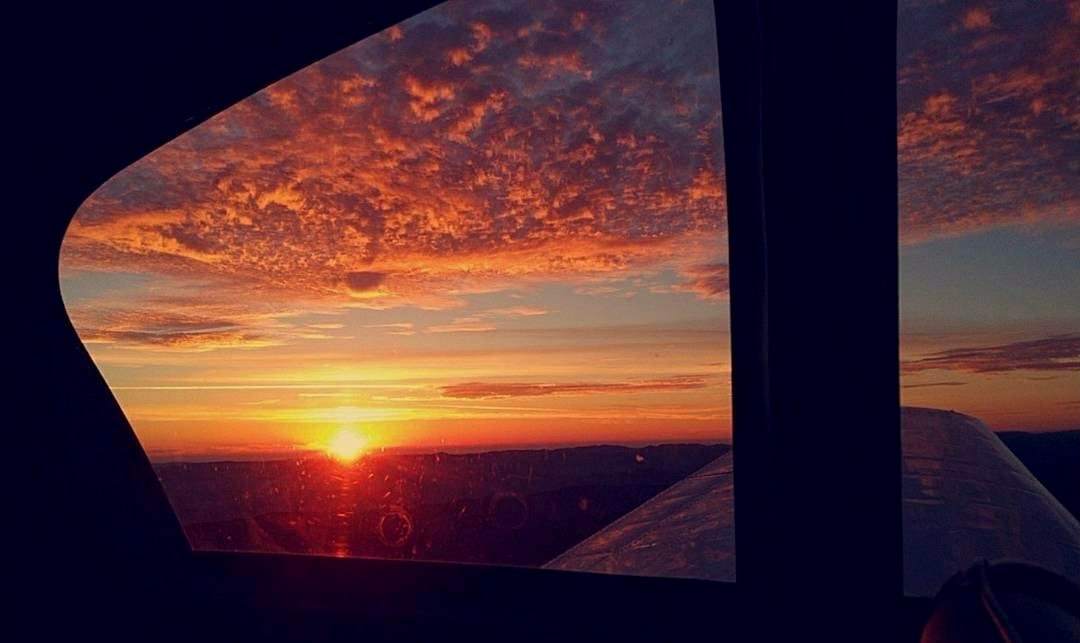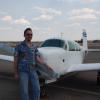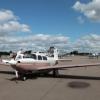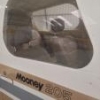Leaderboard
Popular Content
Showing content with the highest reputation on 12/13/2024 in all areas
-
8 points
-
Good evening folks - I thought I would share some interesting points about my flight today from Pontiac, Michigan (KPTK) to Philadelphia (KPNE). The weather brief was consistent for the prior few days: A strong low pressure above Maine with dense isobars promising a powerful tailwind for the trip. The specific forecast was about 75 knot tailwind at 15,000. Surface winds were gusty at both departure and arrival. The morning low temperature caught me a little by surprise (12 degrees F), as we had enjoyed milder temperatures so far this winter. Fortunately, the night before I set the SwitchOn to give me 5 hours of engine and cabin pre-heat prior to my planned 9am departure from Pontiac. By now, I've figured out the clothing needed to manage the in-hangar pre-flight and only open the hangar door when the plane is ready to drag outside. (This is my second winter season, but much of last winter had the airplane in the shop for one thing or another.) The arrival at the airport hangar was in bright (cold) sunshine with scattered clouds at 4,000 MSL. Gusty winds were nearly down the east/west runway. I packed the plane with gear I might need in Philadelphia (TKS hand sprayer, 100 foot extension cord for engine heater, tools, etc.) and pulled the plane out with my Sidewinder tug. Or tried to. There was a light coating of snow on the pavement outside the hangar, maybe half an inch, but a dry area for about 10 feet outside the door before the snow layer started. As I pull the plane out, I wait for wing to clear the door then turn the tug to the left to angle towards the taxiway. I got the plane partially out, cleared the wing and started the turn. When the nose wheel hit the snow, I noticed the sidewinder having trouble getting purchase on the snowy nose tire. Then, when the mains hit the snow, enough resistance built up that the sidewinder simply slipped on the nosewheel. Luckily, the tail was clear of the door so that it could be closed. The plane was at a 45-degree angle, so some prop blast would be towards the door, but seemed (and turned out to be) fine. If snow had piled up against the door, obviously I'd be doing some snow shoveling while guessing how the tires would track so that I'd only need to clear the track for the tires. I have a shovel in the hangar and all this dawned on me as I looked at the airplane sitting there at the 45-degree angle. The pavement slopes downward away from the hangar door, so gravity was working for me. Putting the plane back in, up the slope, in snow, may not be possible with the Sidewinder. I remember pulling a club Mooney a long time ago into a hangar with a winch at the back of the hangar. I need to figure this out. The runup, clearance, and take off were normal, albeit "sporty". Once the power was in, I glanced at the airspeed tape on the G1000 and saw 45 knots really quick. Cold and headwind. This plane has the 310hp STC. I push the go-around button before takeoff to set the flight director and prepare for AP engagement at 400 feet AGL. Tower was a little slow to pass me off to Detroit Departure, so I was able to engage AP at 400 feet and was about to select heading when Tower passed me over to Departure. As I was reaching to select Com 2, there was a massive jolt, as if the Fist of God had hammered the top of the airplane. My head (more accurately my Bose headset) hit the ceiling and I was momentarily stunned. Not physiologically, but mentally. You've experienced it: an event that shocks your system and takes a couple of beats for your brain to check in with body systems to assess damage. The Bose crackled a bit, seemingly unhappy with the ceiling impact, but I felt no pain. By the time I wondered about the airplane (a second or two later), my brain registered that the engine had not missed a beat and nothing abnormal was felt in the controls. Before I could think to worry about the structure, the plane was saying "don't worry about me". A few seconds later, I got it together and switched to Departure. Interestingly, other than that jolt, the rest of the climb through 4,000 MSL was fairly mild bumps up to the glass smooth air above the scattered layer. As I climbed, I looked at the seatbelt to cinch it tighter but realized that with the 3-point design, there's not a great way to get much more vertical restraint. Perhaps I can get the lap belt portion tighter. The rest of the climb out to the southeast was uneventful, other than the promising ground speeds that were developing. I filed for 15,000 to get the optimum tailwinds (about 75 knots according to Foreflight) but ATC held me at 9,000 until I cleared Detroit's airspace. Tailwinds were 24 knots at 9,000 feet, but Foreflight said the tailwinds jumped fast a little higher. Sure enough, as I continued the climb tailwinds exploded. By the time I got to 15,000, which happened at about 500 fpm at 120 knots indicated (FLC set to 120) I saw a max of 87 knots of tailwind. Ground speed maxed out at 254 knots. For much of the flight, there was an undercast broken layer and snow showed on the Nexrad display on the MFD. The descent started around Harrisburg and as I headed down at 1,000 fpm the top of the green arc came up and I pegged it there by varying the descent rate. Ground Speed hit 270 knots. The undercast disappeared toward Philadelphia, causing me to forget that there was probably a thermal layer nonetheless where turbulence would start. That happened as I descended through 7,000 feet, and it was pretty rough. ATC wanted expedited descent which I translated to 1200 fpm and speed builds quick into the yellow band. Speed brakes will quickly shave off 10 - 15 knots at a given power and descent rate, and the rest is done with power reductions. Turbulence seemed to exacerbate the tendency to creep into the yellow arc and once I saw the over-speed warning that seems to be triggered about halfway into the yellow arc. Speedbrakes and power management need to be jumped on early. I noticed the left speedbrake would not retract fully (about 1 inch proud of the wing surface) so it would seem some lube is needed. When I looked after landing, it was fully retracted. The arrival into Philadelphia (KPNE) was looking good with one of two crossing runways pretty well lined up with the gusty winds. The Tower cleared me to land from outside of the downwind on the visual approach. Then on the frequency, "Tower, this is Vision Jet XXX, we seem to have had a blowout or something." Tower asked if they could clear the runway and they couldn't. I knew what was coming and it wasn't going to be fun. I was rerouted to the crossing runway and I offered that I'd give it a go. It was a 60-degree crosswind at 17 knots, gusting higher. One of those where your base to final turn overshoots final by a lot. The landing was miserable, the crab and kick out worked OK, but gusts resulted in me plopping it down on the mains, in one of those sinking sensations where the runway is further away from your wheels than you thought when the wing stops flying. The LHS system didn't help much because the gusts interfered with how my mind processed the varying aural heights. The wide runway helped keep the plane from being blown off the downwind side. So, the tailwinds were wonderful, the fastest numbers I've even seen in a plane I've flown. But, there's likely going to be a price to pay at either end of the journey. Ed4 points
-
We've run our partnership for 20 years as of 2024, and have tracked this kind of stuff pretty closely, but only the past couple of years are relevant looking forward. Regarding engine/prop reserve, there is no way to set an hourly assessment that ensures the kitty is fat enough to avoid out-of-pocket costs at overhaul time, because you have no way of knowing when the engine will actually need an overhaul. Because of this, we choose to bill an hourly value that tries to approximate the market depreciation on the airplane as more and more time is put on the engine, which presently seems to be about $20-$25 per hour. This is related to the cost of overhaul and recommended TBO, of course, but it's not exactly the same. More importantly, the hourly depreciation is the same regardless of whether the airplane has 600, 800, or 1000 hours on the engine when the new partners buy in. To relate it to your specific question, I'd say $45/hour is much too steep, because the airplane isn't worth $45 less every hour it gets flown. It sounds like you're getting that $45 number by dividing your guess at overhaul cost by (2000-600), such that over the next 1400 hours you'll build up enough reserve to overhaul the engine for no out-of-pocket cost. Again, though, you have no idea when the overhaul will be needed, so that's not a realistic financial model. Instead, all the partners have to share the risk that the engine will need a premature overhaul, and everyone is on the hook for a share of the out-of-pocket cost (they can also share in the windfall if the engine goes well beyond TBO before needing an overhaul). The only way this works is if the hourly rate is based on market depreciation per hour, not the estimated cost of a future overhaul divided by a wild guess at how many hours it will be before that happens. To each their own, but I would not buy into a partnership that required me to pay an "initial reserve" on the engine, unless my buy-in price discounted the value of the airplane by exactly the same amount as the initial reserve. It kinda sounds like you're trying to get the incoming partners to cover some of the cost of the first 600 hours of depreciation, even though you were the only person enjoying the use of the airplane during that time. Regarding non-engine maintenance reserve, ours is currently set at $20/hour, and that's been adequate to cover status-quo upkeep. But we do a lot of owner-assisted maintenance, and we're also pretty formal about the difference between "upkeep" vs. "upgrade". For example, when our vacuum attitude indicator timed out a few years back, everyone paid out of pocket for the G5 installation, we didn't claim that installation of a G5 was just "maintenance" of the vacuum AI. We're not going to "maintain" our UBG-16 engine monitor by installing a GI-275 EIS when it malfunctions, or install a 201 windshield when the stock windshield gets too scratched up, and so on. If you choose to approach things this way, there is really no difference between the maintenance kitty for avionics vs. the maintenance kitty for tires, shock disks, heim joints, and so on. Things are maintained by replacing them with exactly the same thing. Anything different is an upgrade, subject to whatever voting procedures you use for upgrades. You didn't mention fuel costs, and that implies you plan on dry rates. Based on experience, I'd like to suggest you consider wet rates instead, that get adjusted a few times a year as fuel cost varies. I know this sounds like more trouble than a dry rate, but I think what most people miss is that it's simply not possible for every partner to always exactly replace the fuel they use at the end of a flight. Sometimes the fuel pump doesn't work the day you get home, and you're not able to drive back out to the airport the next morning to gas up. Other times one partner might ask another to deliberately leave the airplane down on gas so as to carry more payload, etc. In a wet-rate partnership, partners are simply reimbursed by the LLC for whatever fuel they buy, under any circumstances. In a dry rate partnership, events like the ones I mentioned create debts directly between partners rather than through the LLC, and that can lead to hard feelings. A wet hourly rate does deprive frugal partners of the opportunity to save money by gassing up at cheap airports and/or flying at reduced power, but the actual value of those savings is trivial in the scheme of overall airplane ownership, and in my opinion not worth the stress and risk to the partnership of creating fuel debts between partners. Finally, a word of advice: "add-on" partnerships like the one you're proposing sometimes fail because the previously sole owner never really treats the new partners like equals when it comes to how the airplane is operated. You've got to be at peace with the idea that you're *selling* the airplane, not merely lending it. On day 1 of the partnership, the new partners have a fully equal vote on how much gas to leave in the tanks, whether the airplane gets wiped down after every flight, how the seatbelts are stowed, what oil level to run at, whether the tow bar is left on the nose gear in the hangar or stowed in the baggage compartment, and so on. You need to avoid the feeling that you've got the airplane all figured out, and you'll teach the new partners how to operate it, and that can be pretty difficult. Regarding number of partners, we've had 3 or 4 at various times throughout the partnership, and that has indeed been a magic number for us. But... none of the partners fly overnight trips very often. Maybe 1-2 per year per partner. Obviously 4 partners isn't going to work very well if each partner wants to have the airplane away from its home base 90 days per year. That said, it's also worth noting that many people who buy into a partnership fly less than they planned/hoped, especially if it's their first airplane. I'm unconcerned when new partners approach our partnership stating they're going to fly 100+ hours per year, because I know that historically, most of them fly a little less than that the first year, and even less in the years after that. That knowledge makes it easy to be generous with scheduling. Most people are decent, and aren't going to take advantage in the long run, so you can build a really great partnership by being generous with scheduling and operating policies to your new partners in the early going. You might be a little annoyed that they don't put the airplane away the same way as you, but that seems pretty trivial in the long run when you build a great friendship, and every unexpected cost is split across the partnership rather than borne by you alone. Best of luck with your plans!4 points
-
You can slow down the problem, but you can’t stop it because the grommets start to wear the holes in the cowling into an egg shape. The way you can stop it is to build a piece of fiberglass inside the cowling that is 1/4” high and contacts a piece of angled aluminum riveted to the inside of the boot cowl. And then it could take the shear load and the grommets can do their job by holding the cowling down.4 points
-
I was line service all through college (frankly my favorite job of all time lol). I always volunteered for fuel as I just like the time by myself. I’ve probably fueled 20k planes??? It’s not complicated. Unpainted metal. For me exhaust. Getting down to some unpainted part of the nose gear leads to prop contact. None of our hoses had stripes but all were grounded in the rubber. And agree, the risk of not being properly bonded comes while pumping. This falls under the “things I don’t worry about ever” category.3 points
-
My 1994 M20J cowling aligns with the spinner when installed and there is about a 1/16" gap between both the upper and lower cowling and the fuselage skins. However, as soon as I fly it, the air pressure rocks the cowling back closing the gap between the upper cowling and the skin in front of the windshield and misaligning the cowling with the spinner. Some serial numbers have floating receptacles for the 4002 Camlocs that attach the cowling to the fuselage and Paul Lowen purportedly used to solve the problem by replacing a few receptacles with fixed ones. But mine are all fixed. I finally figured out that the problem is that the Camloc 4002-HS grommets have a reduced size shank to hold the retaining ring and this creates some slop. Skybolt makes a "high shear" grommet SK40G1-11S that has a full sized shank with a groove for the retaining ring. I installed five of these (the Skybolt minimum order for the part): two at the bottom of the lower cowling in front of the nose wheel, one on each side at the top of the lower cowling and one in the center of the top cowling and this solved the problem.2 points
-
A little more info to add some value. My upholstery guy asked if I could get two more headrests. The OEM Mooney we’re a bit jenky in his opinion and sat too far back from the seat to be of use. Back to the junkyard for me - a treat not a chore! Luckily they had a newly arrived 2015 Nissan Pathfinder. Scored two more matching headrests (to the ones I bought earlier). As luck would have it, a 2015 Nissan Murano was parked next to it. They fit too. The Pathfinder has a bit more flat head contact area and the Murano’s has a bit of a head concave. In the pic below, the Pathfinder is left and the Murano is right. Sizing and mounting are identical. The measurement for the posts is a hair under 6” center-center (call it 5 31/32”). Post diameter is a smidge under 13mm (and I mean a smidge). My cheap calipers day 12.93mm.2 points
-
I did that yesterday. Specially because the Concorde website listed certain serial numbers as appropriate for the RG24-15 and/or RG24-11. FWIW, I have email Frank at Mooney some times and he has always been very fast and helpful in his responses. He sent me the information regarding that "Concorde battery retrofit". It refers to the suitability for all 24-3000+ serial numbered M20Js to use the RG24-11/15 batteries plus the need for a 1.5lbs adjustment in weight and balance if using the -15 battery, which is heavier. I ended up ordering a RG24-11M, which was more readily available and had faster shipping. It should arrive next week and I'll get a tech to help me check all grounding and make sure everything will work. The battery technician really thinks there is a high likelihood my grounding should be ok. From what he could see in the battery tests they ran, there was an internal short and it would explain the huge negative current. If the short in the battery is intermittent, the ammeter could show large swings as the current draw spikes when the short is present, just like I experienced in flight. For example, I saw currents fluctuating from +2 to -290 amps. Also, the battery overheated when they ran a charging test. If one or more battery cells are shorted, they will convert charging current to heat (that's what I was told). However, next week, when the new battery arrives, I'll run some tests. Thanks for the inputs to everyone. This forum is a life (and pocket) saver.2 points
-
The instructor who did my Mooney transition training (ex-official Mooney factory instructor) advised me to use the round hole of the front landing gear to attach the ground, and I've been doing this ever since. (I mean the sides of the hole where you insert the towbar into the front gear.)2 points
-
If you use a fuel hose with a yellow stripe on it, then the fuel nozzle is grounded. So after discharging the nozzle to the aircraft, you are good to go if you keep the nozzle in contact with the aircraft. https://www.parker.com/literature/Industrial Hose Products/IHP Literature PDF files/IHP Product Catalogs/CAT 4815 Gold Label Aircraft Fueling Hose.pdf See page 12. It says that the hose assemblies are tested for electrical conductivity.2 points
-
Not necessarily, in the same spot on the curve, that’s true, but the leaner you get from peak, the slower the flame front and eventually power output will decline. Put into practice, 27 inches of manifold pressure at 8 gallons an hour is a certain percentage of power at 30 lean of peak, but if you shove more manifold pressure through it and then lean it back to the same fuel flow, it is now 100 lean of peak, and that won’t be the same horsepower at the crankshaft. You can see this with your airspeed. It’s because the efficiency is less because it’s actually too far down the backside of the peak. The peak power pulse of combustion occurs further down the cylinder because it’s burning slower.2 points
-
Exhaust. There are 1,000 more important things to worry about.2 points
-
*** Under Contract *** Eagle 2 with Screaming Eagle 310hp conversion -- $225k This girl is quick and capable! 180kts while burning 12.5gph in cruise. Extended range 100 gallon fuel tanks (just resealed in March 2024). Equipped with dual alternators and TKS for a bit of peace of mind when flying IFR in the colder months. Speed brakes to help get down quickly when ATC keeps you way too high until the last minute! Built in oxygen system for mountain flying, avoiding weather, or just getting up high to take advantage of winds. Crazy bright LED nav, strobe, taxi and landing lights with wig-wag to see and be seen day or night. And, wait for it, a built in CD player linked to the audio panel in case you want to break out the CD collection from the 90s!! Airframe Total Time: 2120 Engine Time: 640 SMOH Engine Time Between Overhaul: 2,000 Continental IO550, 310hp, 2000 TBO MidWest M20 'Screaming Eagle' 310hp Conversion (up from original 244hp on Eagle) Prop Notes: 640 Hours Since Prop Overhaul Hartzell 3-Blade 'Top Prop' Blended Airfoil Blades. Upgrade is part of the Screaming Eagle Conversion Avionics: Aspen Avionics EFD1000 Pro PFD with Synthetic Vision Garmin GI-106A CDI STEC-55X Autopilot (upgrade to the stock STEC-30 in the Eagle) Garmin GNS-530W (Bidirectionally linked with GNS-430W) Garmin GNS-430W Garmin GTX-330ES with ADS-B Out JPI EDM-900 Engine Management Instrument (Replaces all engine and fuel gauges with a single point primary instrument) Additional Equipment Speed Brakes (Standard on Ovation but not on the Eagle) Extended 100 Gallon Fuel Tanks 4 Place Oxygen System B&C Standby Alternator. Exterior Notes Original. Late Model Eagle Scheme. Good Condition. Interior Notes Original. Grey Leather. Inspection Status Annual Inspection Due March 2025 IFR Certifications Due March 2025 Airframe TKS De-Ice Speed Brakes Extended 100 Gallon Fuel Tanks (resealed March 2024) Four Place Oxygen System LED Nav, Strobe, Taxi, and Landing Lights with Wig-Wag System Electronic Rudder Trim (panel mounted) Electronic Elevator Trim (yoke mounted) Engine Screaming Eagle 310hp STC Continental IO550, 2000 TBO Hartzell 3-Blade 'Top Prop' Blended Airfoil Blades Oil Filter Relocation Kit (simplifies oil changes) Avionics Autopilot: - STEC-55X Autopilot Primary Flight Instruments: - Aspen Evolution 1000 PFD with Synthetic Vision Backup Flight Instruments: - Garmin GI-106A CDI (slaved to GNS-430W) - Electronic Backup Attitude Indicator (no vacuum pump) - Analog Airspeed indicator - Analog Altimeter - Electronic Turn Coordinator Navigation: - Garmin GNS-530W - Garmin GNS-430W ** units paired together, so entering flight plans on one unit automatically syncs to the other Transponder: Garmin GTX-330ES with ADS-B Out Electrical system: - B&C Standby Alternator - Dual Independent / Selectable Batteries Interior Original interior in good condition. No tears or rips in any of the seats. Carpet is in good condition for its age, but I'm sure a good foam carpet cleaning wouldn't hurt! Logs https://drive.google.com/drive/folders/1kBItkPxeZKZ91UeEy9iTfkBfIcOuUx6L?usp=sharing Weight and Balance https://drive.google.com/drive/folders/14MwHRA9Fs-ZRPHxefHxMwx4HSs_-1606?usp=sharing ** A quick note on W&B, I definitely think this needs to be updated. I know that just in the time I've owned the aircraft things have change (like removal of halogen lights, their transformers, and analog mortitz gauges) that didn't result in an updated W&B. I didn't even think about it at the time. But now, I'm going to get the aircraft weighed to see exactly where it stands. Remarks ** Fuel tanks resealed in March of 2024 at Wet Wingologist, work carries a 7 year warranty. ** Landing gear pucks replaced 2019. Annual due March 2025 Damage history: Minimal. Previous owner *NEARLY* landed gear up, but realized at the last second, pulled up, and went around. In this process, he scraped the belly just forward of the tail on the ground and the prop struck the ground. A single belly panel under the tail was replaced and repainted by Don Maxwell and the engine was rebuilt, adding the Screaming Eagle STC. Corresponding logbook entries and detailed insurance documentation, as well as the original statement from the pilot to the insurance company on the sequence of events are all available.1 point
-
1970 F - but believe this applies to a very wide range of Mooney models. I’ve read every headrest post on MS. There’s definitely some misinformation out there. My interior is getting redone and I really wanted to add headrests to my front seats. My rear reclining seats had them, but they were stuck in the seats. The fronts used to, but for whatever reason the PO covered them over in the 80’s and tossed the headrests. I took some exact measurements, made a cardboard template and went to my childhood happy place - the junkyard. I found a perfect match on a 2014 Nissan Pathfinder S (from the front seats). My interior guy just messaged and said they’re perfect. A little extra Google work and it appears the fronts from a 2013 - 2016 (trim doesn’t matter) will fit. I probably checked 200+ cars…but it was a nice day and I was having a blast. Total cost was $15 ($3 entry fee and $12 cost for a pair of headrests). They’re far better quality than the OEM Mooney and are farther forward which is great for actually using it. As you can see, all four seats had the tubular structure in the seat. You can feel the open tube through the material if you want to examine if your seat already has the tubing.1 point
-
I'm unfortunately grounded for a while (pro-tip: don't fall off a ladder) so I'm been doing some chair flying. I've always used the exhaust as a grounding point to refuel my Mooney but it doesn't look to be a good idea. What do you all use?1 point
-
Thanks for the complements. I'm willing to share our documents, but I first owe my partners the courtesy of getting their consent to send them to third parties. I'll ping them when I get a chance, it will take a few days. One thing I will say immediately is that it took us a while, but we finally figured out that one should have one simple document which addresses the business of the LLC and its members only in general terms, independent of what business the LLC might be engaged in (things like how shares are tracked, rules for meetings, etc.); and a separate and usually more complicated agreement that details how aircraft owned by the LLC are operated, maintained, and funded. Don't mix and match the two, as doing so winds up creating conflicting information and generally just becomes a headache.1 point
-
That's the way our partnership works, and I was really enamored of the idea in the early years. I'm not disenamored with it now, but I also don't care about it as much as I used to. It turns out it that people who spend a lot of time advocating for this kind of thing are largely missing the forest for the trees. The majority of fuel bought will always be at the home airport, because any other strategy quickly runs afoul of the hourly cost just to fly the airplane to the airport with cheap gas. So pilots are only going to leverage this delta on cross-country flights. A really active partnership (not a flight school) might have partners who each fly 100 hours per year at roughly 10GPH. That's 1000 gallons of fuel per partner, most of which will be bought at home. Even if a partner with particular wanderlust buys fully half their fuel away from home, and manages to save or spend an absurd average delta of $2 per gallon, the resultant "savings" or "subsidy" vs. other partners is $1000 in this extreme example, and in reality it's much less - maybe a few hundred bucks. Compared with the cost of owning and operating the airplane in the first place - especially the uncertainly discussed above - this just isn't a whole lot of scratch. That's not to say it's not still a good idea. But when forming a partnership, you really want to look for cues about whether the individuals are more concerned about the health of the partnership and friendships, or more concerned about "getting their fair share". People who put a lot of energy into arguing about how wet rates aren't fair tend to be in the latter category, though that's of course not an absolute. Just my two cents.1 point
-
The PMA450 has a few features that are really nice, including multiple BT inputs and music inputs. You can basically have four people listening to whatever they want to and not have to bother with what anybody else is doing. The "intelliaudio" is way more useful than I expected, in that it allows you to put Com1 and Com2 to in spatially separated zones, i.e., Com1 a bit more to the left, Com2 a bit more to the right, and you control whether they're separated and by how much. I don't have them separated by much, but it's enough that you just know whether what you just heard came from Com1 or Com2 by whether it was a bit more on your right or left. It's pretty natural after a while so that you don't even think about it. I think there are others that do this, too, but I've done phone calls through mine in flight pretty easily. Music is a breeze. The display on the PMA450 shows the battery level of your phone, so you can keep it in your pocket and still know what's going on there. The soft keys are actually a plus. They don't change unless you push a soft key, and the arrangement and display management is pretty intuitive. Normal operations, like selecting com1, com2, nav, xmit side, ISO, etc., don't involve the soft keys. They're only used for more occassional stuff, so they're really a non-issue, imho.1 point
-
Correct... the installation is a ton of work since it connects to (typically) 2 coms, 2 navs, overhead speaker, 2-4 intercom jacks, and maybe some unswitched inputs as well as power & ground and perhaps a dimmer circuit. You can probably download an installation manual and look at the schematic to get a full sense of the task. It is further complicated if you have no service loops in the existing harness (like mine!) and need to add or replace a pin or two in a 50-pin connector that is not accessible behind a Garmin tray. It is a buy once/cry once decision IMO... just skip the intermediate steps and try to bring it up to modern greatness in one operation, including wiring your jacks for stereo, maybe adding a hardwire music input or two as well. It is worth it.1 point
-
The reason for that quote is that it’s a lot of work. Everything is going through that panel. I would stick with a shop that has experience doing these, as a mistake can be very difficult to correct. Especially if you fly with passengers and do IFR flying, it’s definitely worth it.1 point
-
And it is the lowest impedance path to the fuel tank. At least on the side you hook it to.1 point
-
And I am concerned about my trips over the Caribbean!!! Congratulations to your adventures and to the coverage! Your book is amazing1 point
-
The tool is worth it, imho. There's also a tool for the more plebian camlocks that helps a lot, too. Maybe I do more cowl fastener maintenance than most...1 point
-
It really is that simple, if you have a nice working 340 there are numerous new panels designed to fit the same tray and basic wiring. you literally unscrew it, pull it out the panel, slide new one in place, tighten screw. the newer panels may have features the old panel didn't have and will require additional wiring work. i will say bluetooth and usb are nice, i love being able to call clearance or the wife from the plane, you can also record audio using the bluetooth. usb port is perfect for my efb. You can also sell the 340, may make the replacement hurt less. I went with a pma8000g, awesome panel.1 point
-
Thanks for the video. I’m wondering why the exhaust is not more grounded. What does it have that is restricting electron flow? Out of curiosity now i have to go ohm my exhaust as I’m curious if a turbo exhaust is any better grounded than a normal aspirated exhaust. I used to use my tow tube on the front landing gear but was afraid it was damaging the paint on the outside part of the tube. Once verified my tie-downs are grounded i guess tgat will be the new attach point for me.1 point
-
I think they all do, as fiberglass isn't strong enough to handle much load that way by itself. My cowling is a bit ratty in this regard, but it has 6500 hours on the airframe. I've learned (or I think I have) that the cowl is happier just letting it move around a little than trying to constrain it too much with the fasteners. I seem to recall Jose (or somebody, I think it was him) just glued a piece of solid-core wire on the airframe along the top of the cowl where the gap would be, just to keep it from riding up to close that gap. I've not been tempted to do that, but he said it worked.1 point
-
I saw the result at Lake Hood strip in Anchorage years ago. But the person was fueling a C-180 from cans filtered through a funnel and chamois. I think the funnel and cans may have been plastic. Most of the airplane was reduced to powdery ash. I think the guy got away with minor burns.1 point
-
Audio quality is the best in the business. The soft keys work fine IMO, but I don't fiddle with much, honestly. The intelliaudio (3d spatial) can be configured easily, but doesn't need adjustment after. I upgraded from the GMA 340 and it is so much nicer. Newer Garmin has some extra features, but I think their audio quality still lags noticeably. You can demo at OSH or other shows and do A-B testing and really tell. Sent from my motorola edge plus 2023 using Tapatalk1 point
-
As a pilot with the ancient push button audio panel, I'm curious what is better about the new ones. I mean stereo music to everyone sounds good, but everyone has bluetooth. I can hear the radio fine. I can hear other people reasonably. What more do you get?1 point
-
It's that easy. Actually it is even easier... One 3/32 captive screw! Get the PS Engineering! Way better than Garmin. Sent from my motorola edge plus 2023 using Tapatalk1 point
-
1 point
-
I was out at the hangar today and looked into this. My M20J has the three position flap switch (up, takeoff, full) so the 15 deg takeoff position is quite repeatable and I recently checked it and it is exactly 15 degrees. With the flaps at takeoff, full down aileron deflection appears from the cockpit to be slightly lower at the the trailing edge than the flap trailing edge ( I measured 2.5 deg lower with a digital level). So, how can this be if the ailerons deflect 8 deg and the flaps 15? It's because the hinge line of the ailerons is about 5 inches ahead of the hinge line for the flaps. So, with hydraulic flaps (or electric flaps without the takeoff position on the switch), it is possible to check the takeoff flap position by comparing it to the fully deflected down aileron -- the flap trailing edge should be just a bit higher than the aileron trailing edge, but aligning them is going to be close enough. What is more curious is why did Mooney change the takeoff setting from 15 degrees to 10 degrees starting with the K?1 point
-
They cashed mine as well but I never got the awesome membership card. That’s all I really wanted - to be a card carrying Mooney MAPA member! On the flip side it’s sad what happened to MAPA. They were great folks when it was active but life happens. I am an avid reader of the Mooney Flyer and donated to them in hopes of keeping them going.1 point
-
For all those interested. Installing a LEMO jack is not difficult or expensive. if you are adding them where you have no headphone jacks it can be a lot more difficult. But if you are adding a LEMO where you have jacks, all you need is power. I did it myself in the backseats of my last Mooney. Done in less than an hour for $80. while batteries are not expensive, needing them can be extremely inconvenient. it always seems like they are dead when you are out of batteries.1 point
-
The days when I could do 5+ hours are long gone. My bladder is not what it used to be and there are certain things that I refuse to do in my plane, e..g, using Travel John or similar contraptions, unless I am over water or hostile terrain w/o airports.1 point
-
1 point
-
You can buy off karma, just send $100 to MAPA and no karma will be given. In fact maybe good karma given for an extra $100!1 point
-
When I shop for a mechanic, I look at their tool box and tool organization. Mine has a designated spot for every tool. Must be a former military mechanic SOP. No drawers or bins of tools allowed. My former job was flying MQ-1 & MQ-9 and spent a lot of time outside the GCS in the hangar. When a tool goes missing, the aircraft are grounded until it’s located.1 point
-
I go through Parker @Parker_Woodruff at Airspeed. I am insured with Star.1 point
-
The Monroy tanks change that, as there is fuel in the Monroy segment before you reach 30 gallons. So at some point, the wing gauge will read less than the actual fuel, even though it is showing less than 30. I calibrated some dipsticks and the wing gauges. When my wing gauges read 30, I actually have 37.5 usable. At 30 gallons usable, the wing gauge reads 24. But the sight gauges are always a bit off. At 17 on the gauge, I have 20 usable. The good thing is, I always have more than the wing gauges say.1 point
-
I had a lead-melting kit as a kid--made soldiers and whatnot with it using molds. Yay me? (I was at a debate once between G. Gordon Liddy and Timothy Leary, and Leary quipped that senility was the most psychedelic experience yet. Perhaps I should consider that a bright side?) --Up.1 point
-
Just caught "1970 F" in @bigmo's original post. Will def. fit my 1970 C.1 point
-
Good job documenting, @bigmo I recall on the old Mooney List mail server days that people were getting them from Toyota Camrys. I'm sure you're filing a 337 on this 'mod'? IIRC, my OEM headrests (circa 1970) were just an aluminum tube with two 90* bends and a custom foam pad and a cloth cover. As the foam wore out from the years, the headrests sort of flopped all over. I modded the headrests by zip-tying an old aluminum motorcycle license plate between the arms of the tube to support the back of the foam. Given that the automotive headrests are tested as part of the car's safety systems, I'm sure they are far superior to the aviation variety designed in the 1960s for weight savings. Might go get a set myself! Can you give me a tube-to-tube distance before I buy some off of ebay?1 point
-
1 point
-
It’s great to see my little contribution to the great space that is Mooney with the continuation of the today’s flight threads starting each year. I can’t remember what year I started this but still take time to read about all the great stories of Mooney flying. Here is my contribution to sunset and the Mooney wing. Merry Christmas to you all1 point
-
1 point
-
1 point
-
All commercial maneuvers are about planning and adapting. Look at where are you at 45 degrees; adapt to be at the right point at 90 and 135 and 180. For me, that meant changing pitch and bank angle to get to where I needed to be. I seem to remember doing them (in an F) at 18”, 2500 rpm, but ~120 mph (but also typically at 9500’). My commercial instructor always said that if a lazy 8 wasn’t boring, I was doing it wrong!1 point
-
Sorry, I never saw this! It was us on the way home from the US. We returned to Germany exactly one year ago, I attached a map with our whole journey depicted. For us it was the first atlantic crossing. However, the previous owner of N228RM, with whom we're still in good contact, did it at least ten times! Best regards, Gunter1 point
-
I must admit my heart nearly stopped when I saw the subject line!! Thought it must have gone down.... I've been following Gunter and his wife on his grand tour for a while with his regular FB updates...cool couple1 point

